
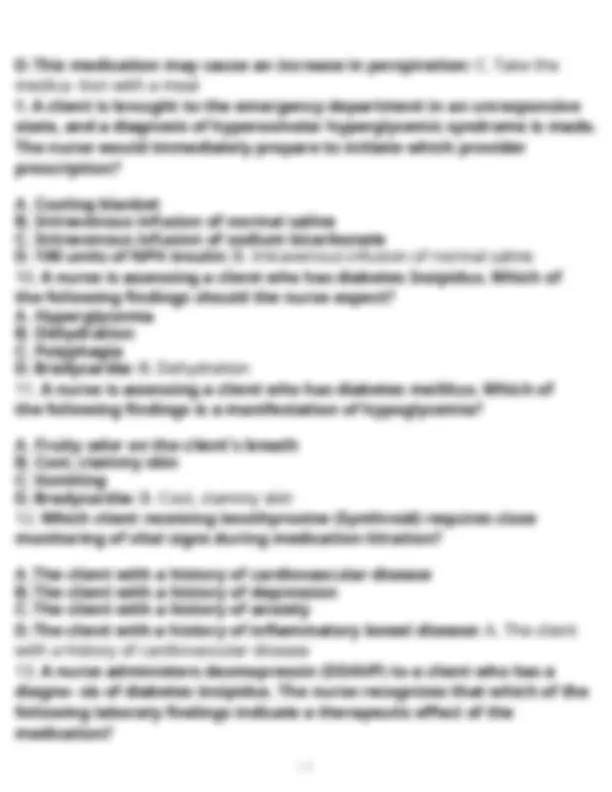
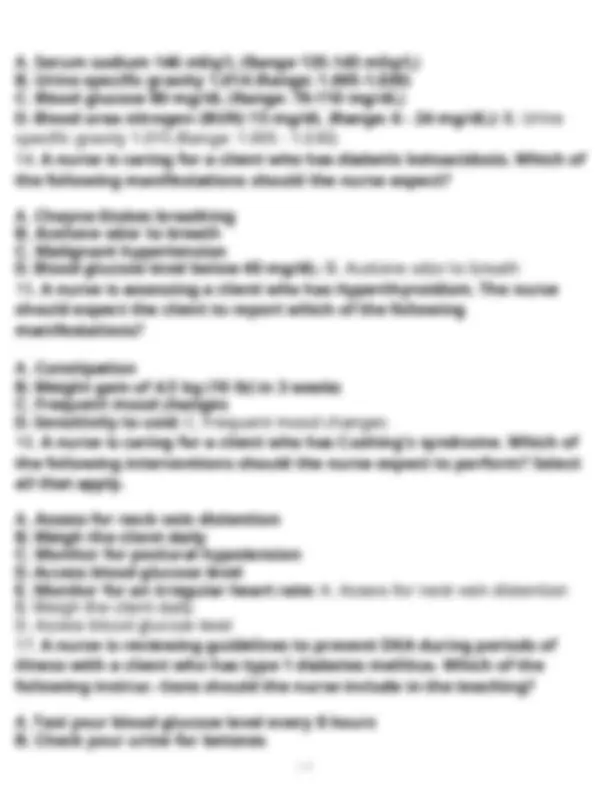
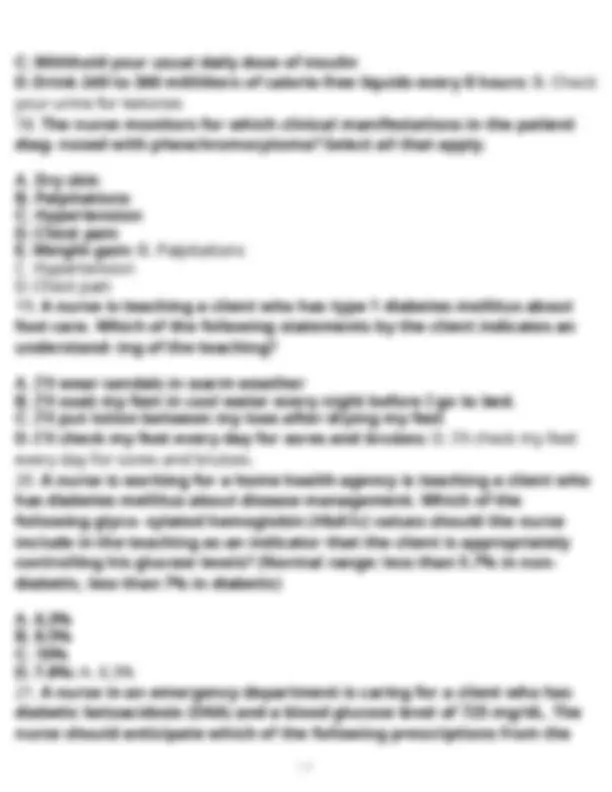
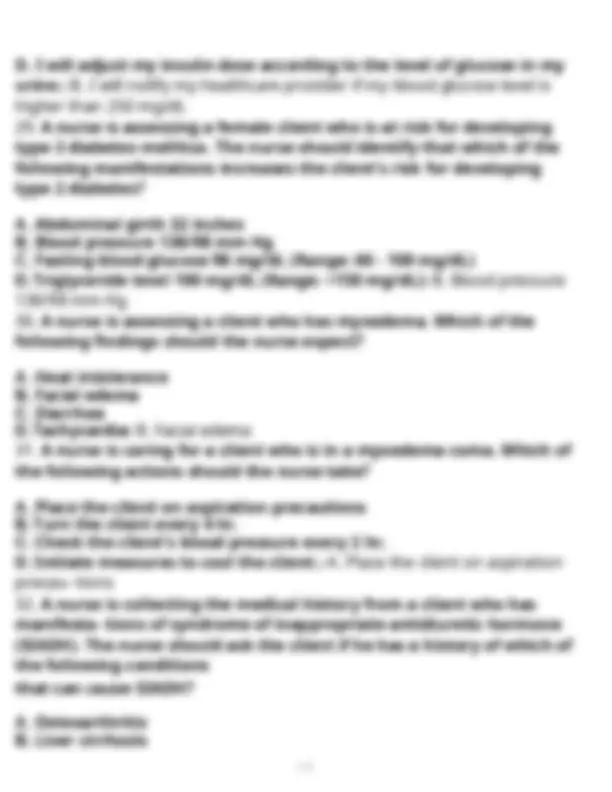
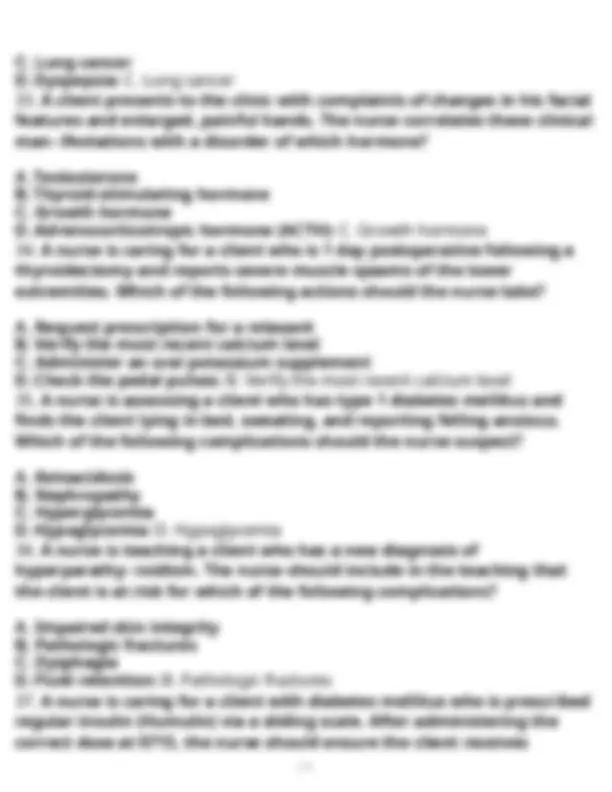
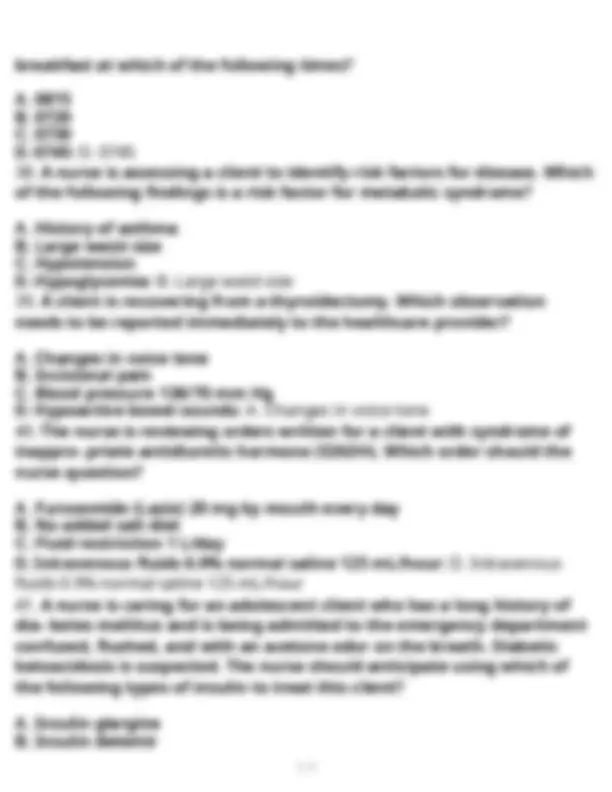
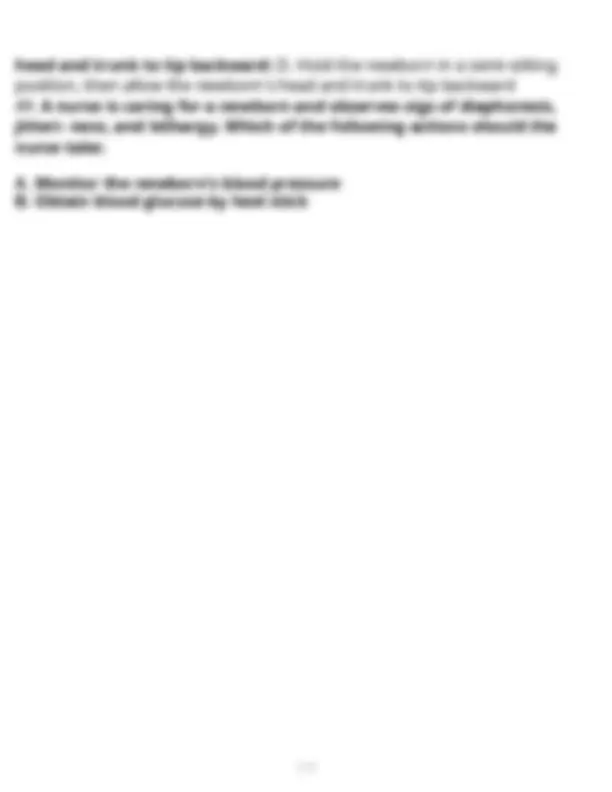
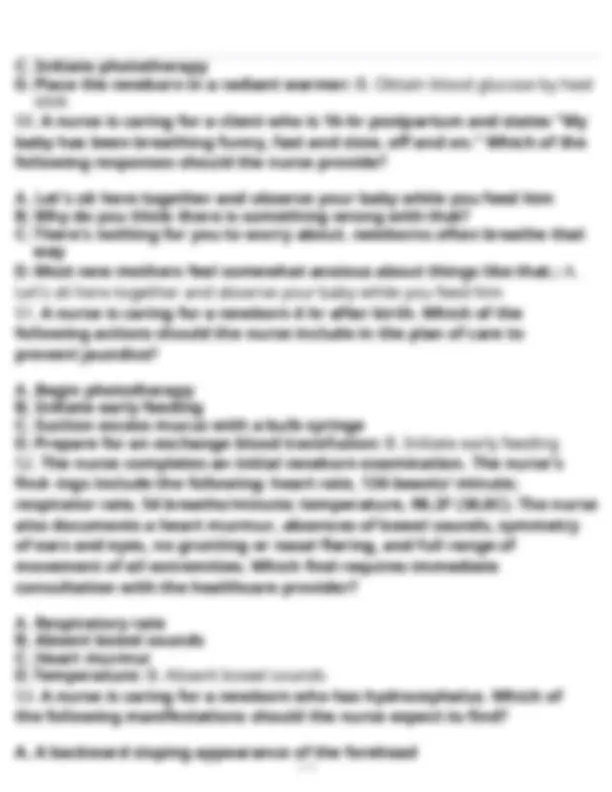
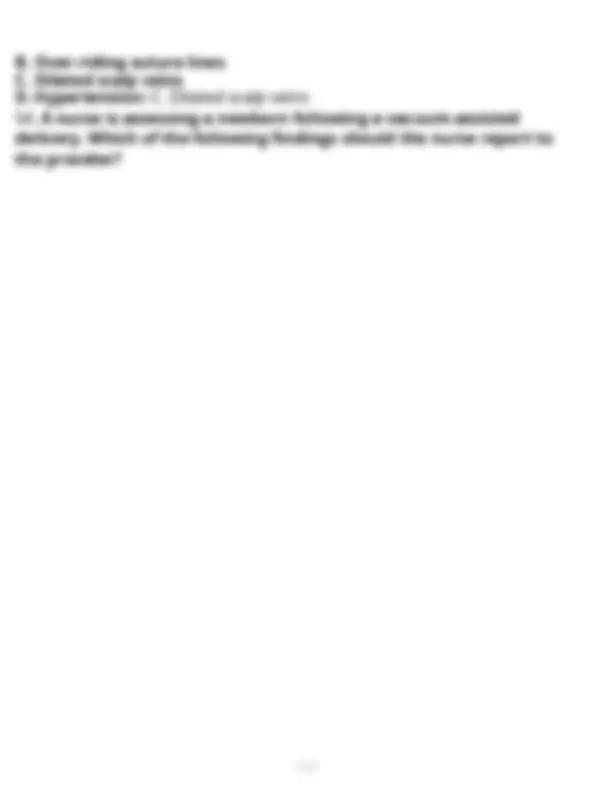
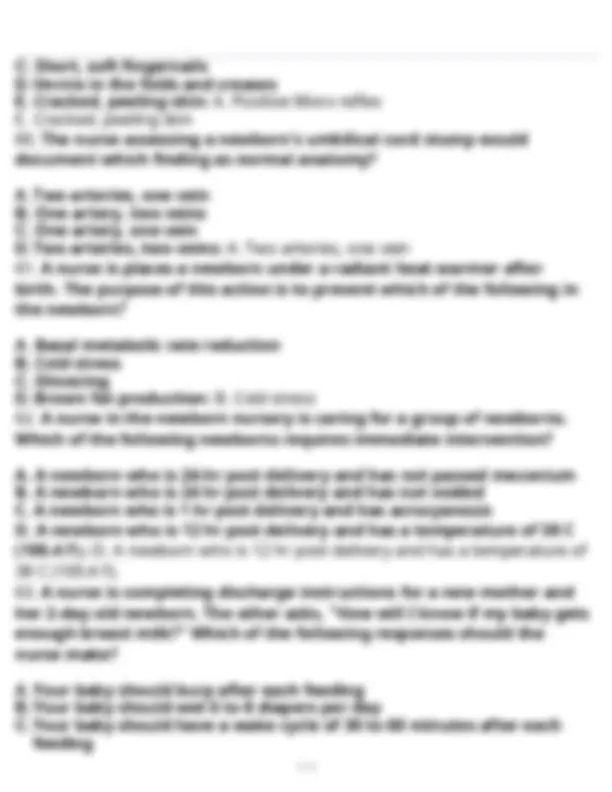
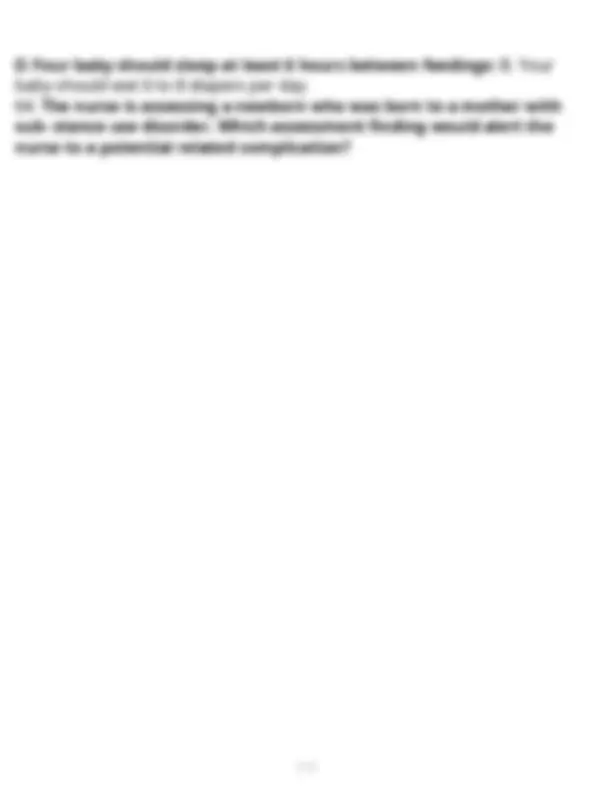
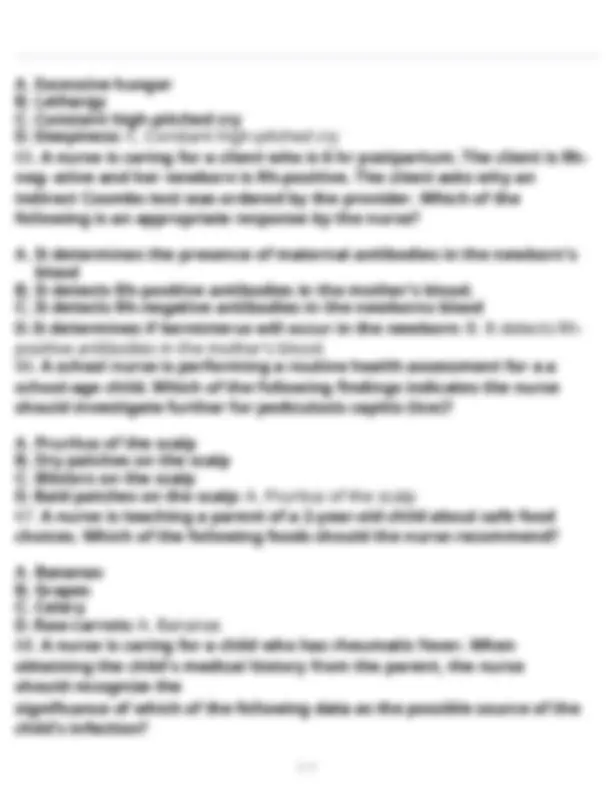
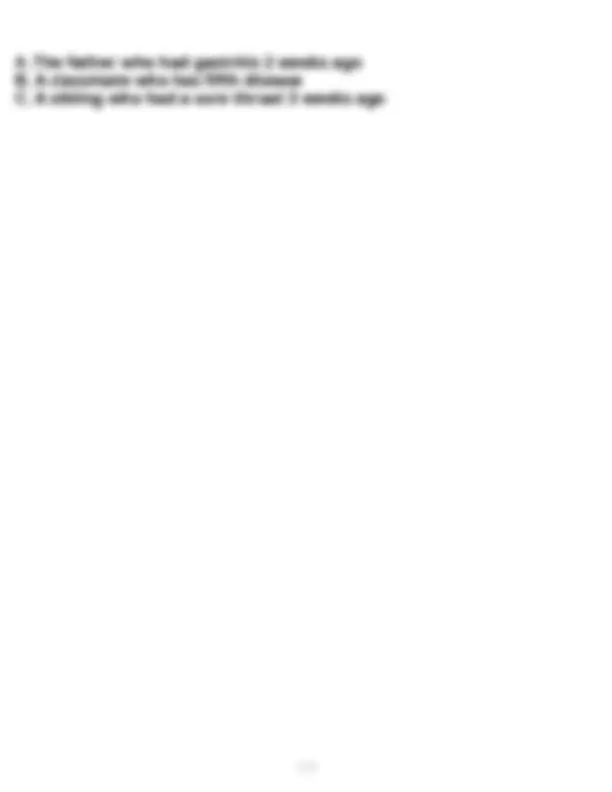
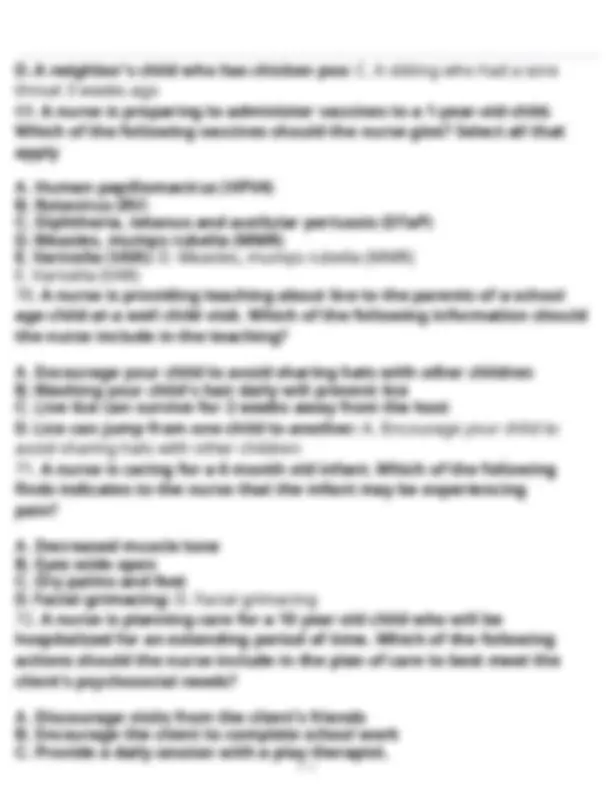
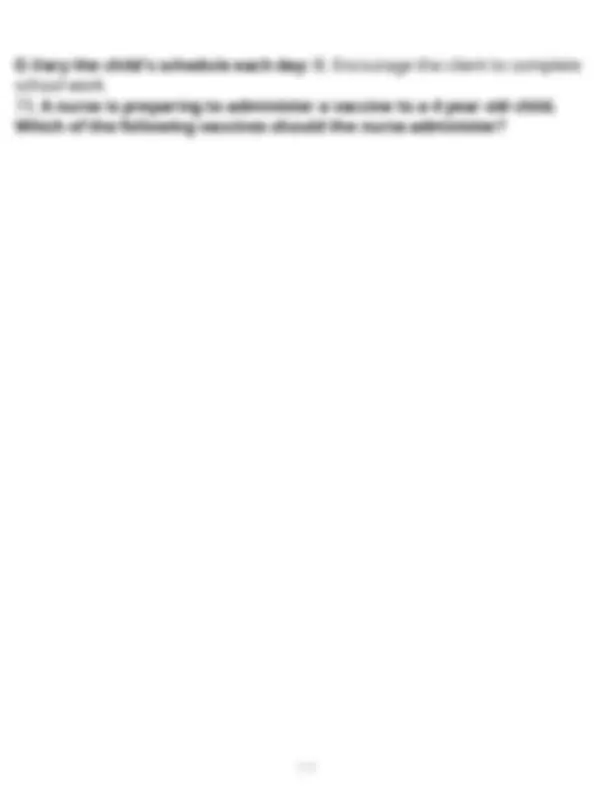
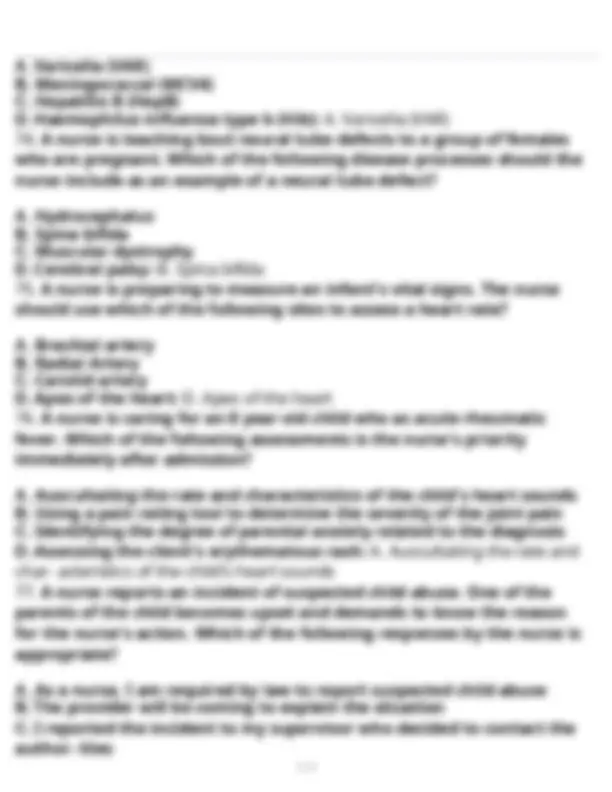
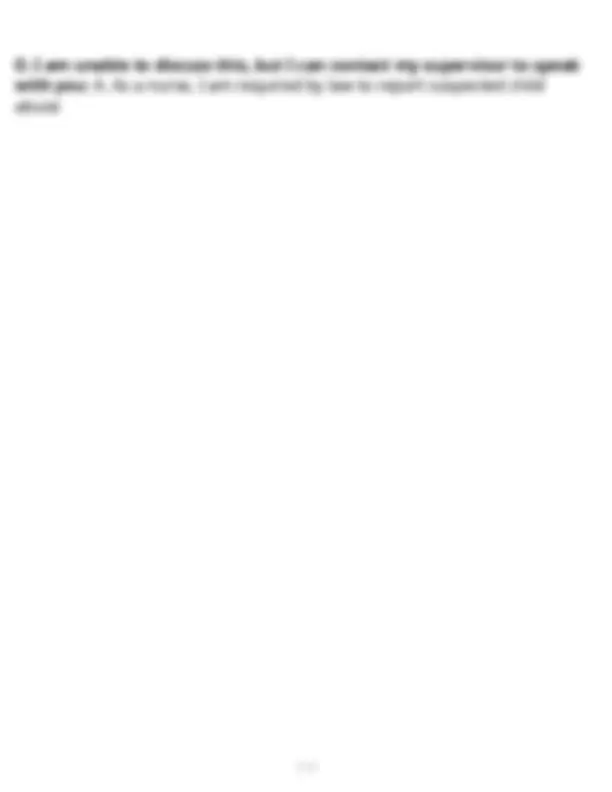
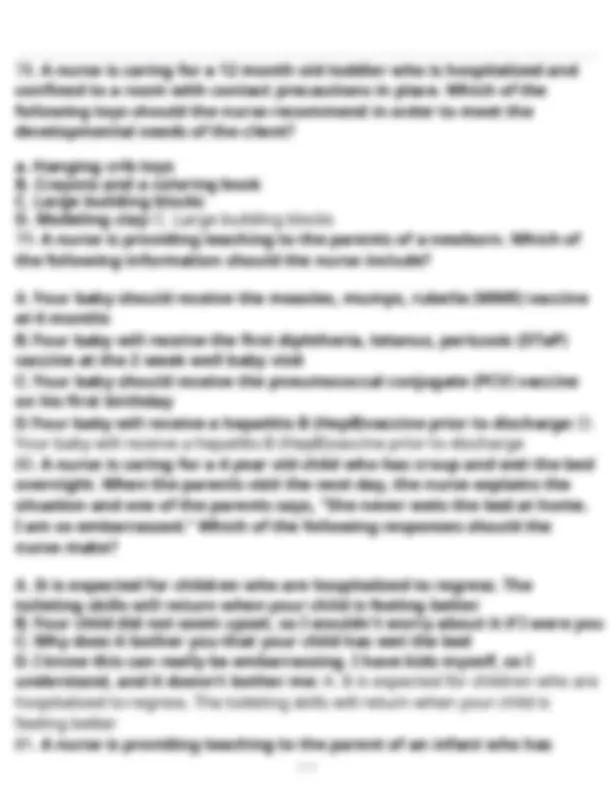
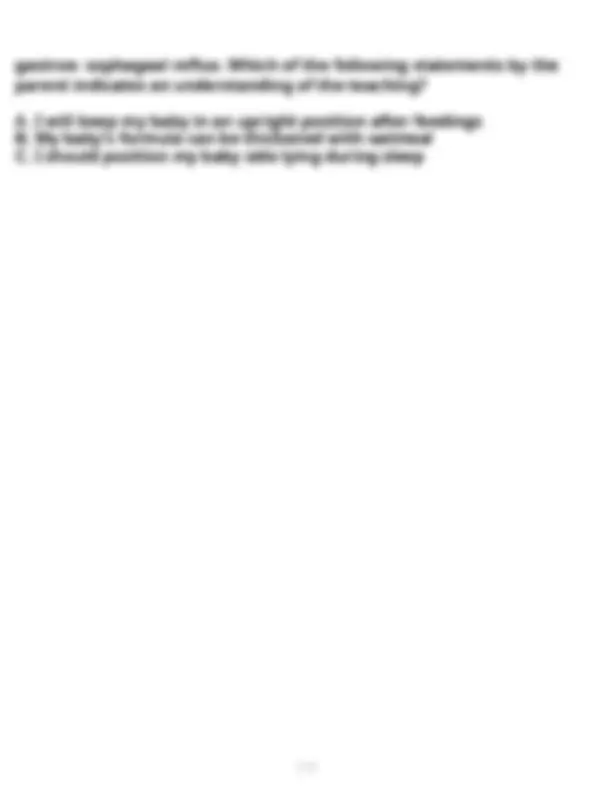
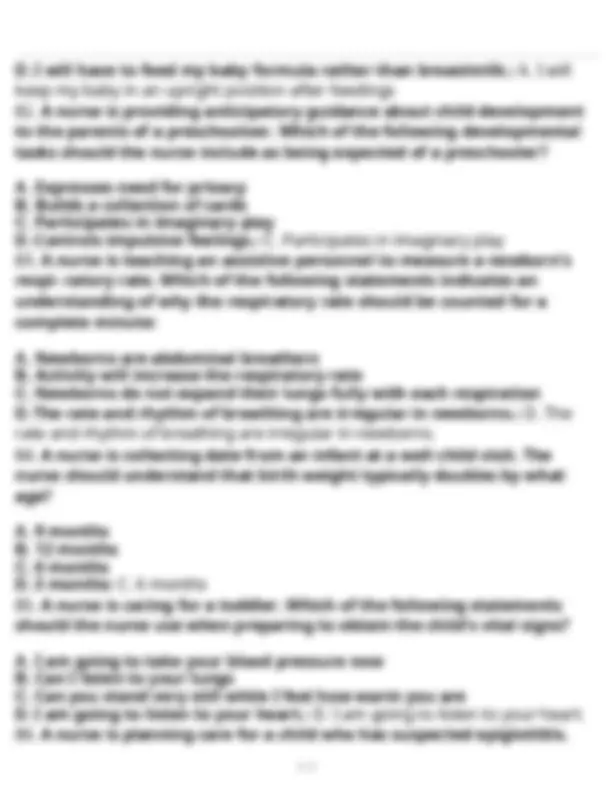
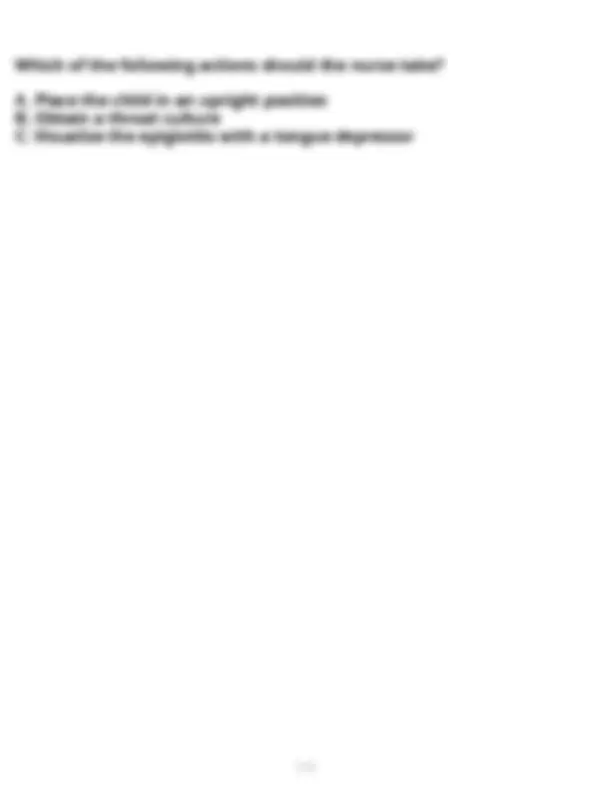
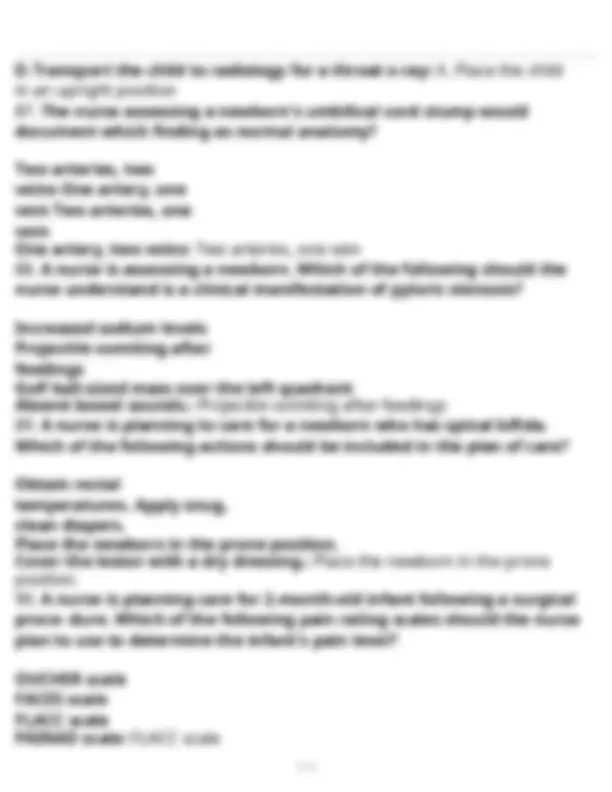
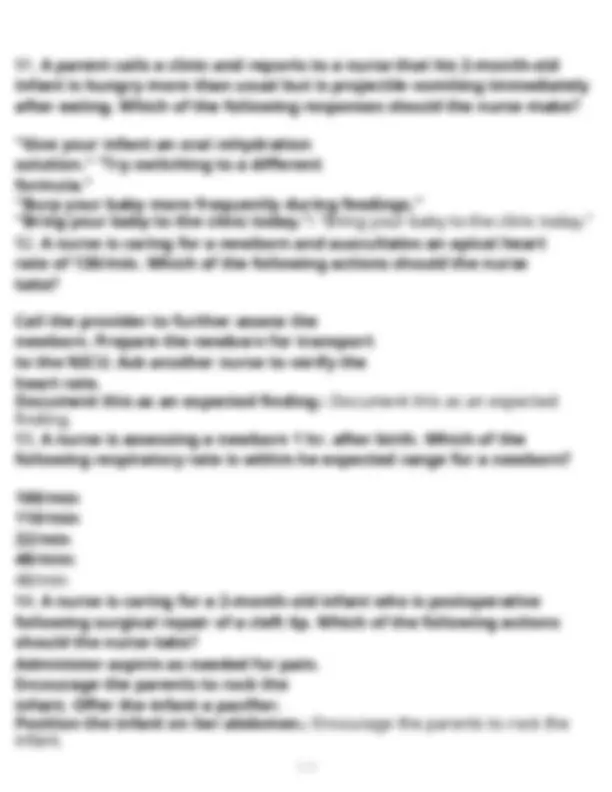
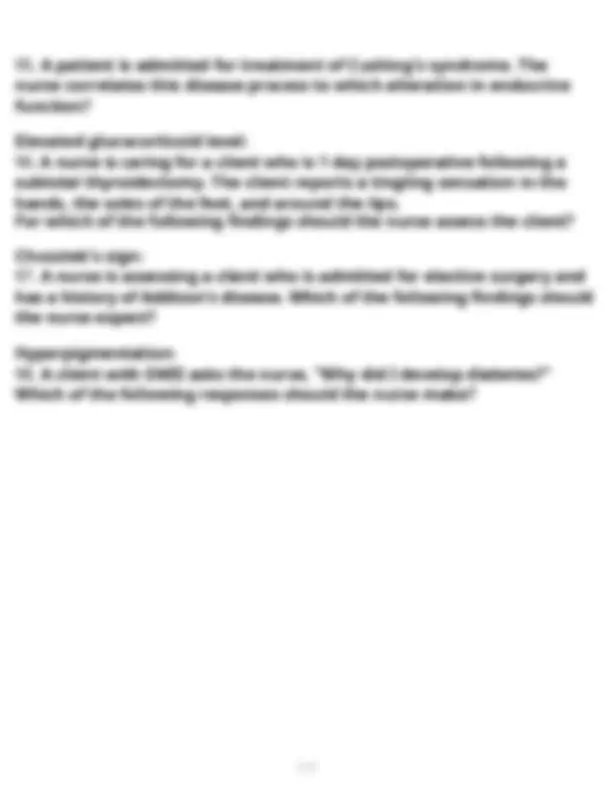
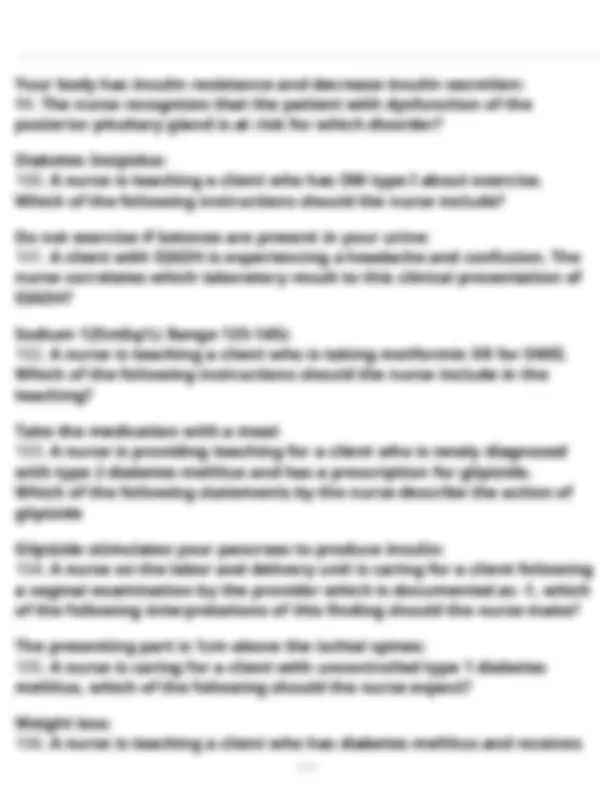
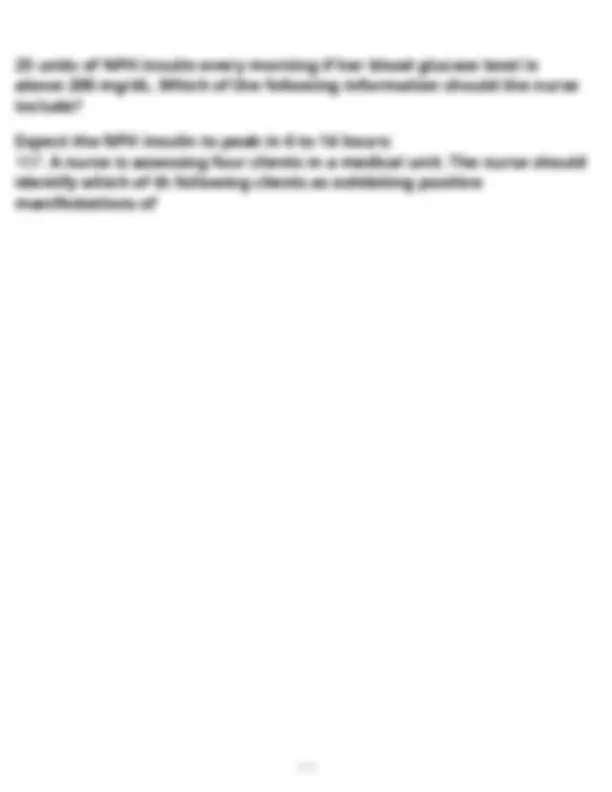
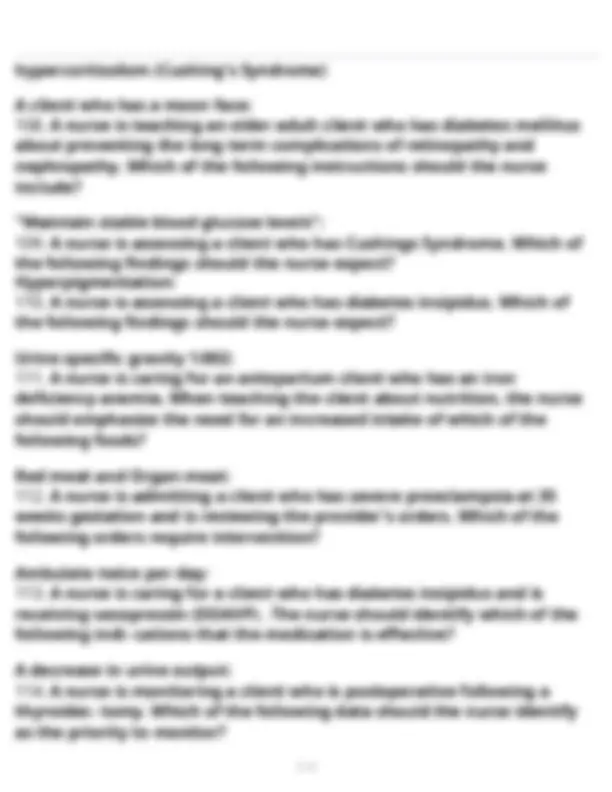
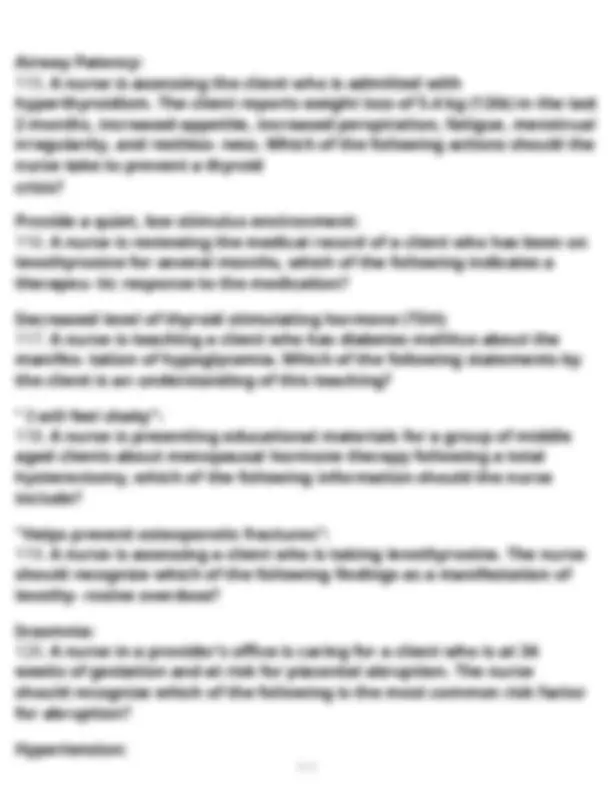
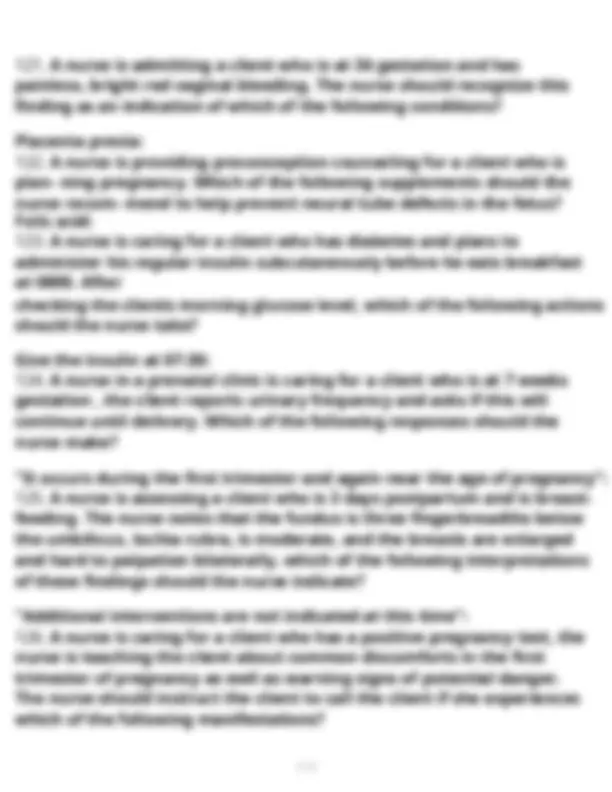
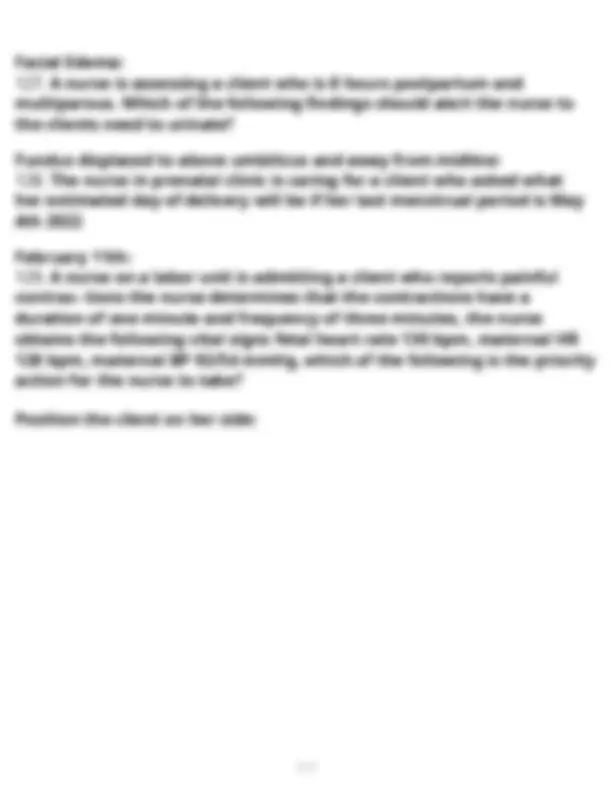
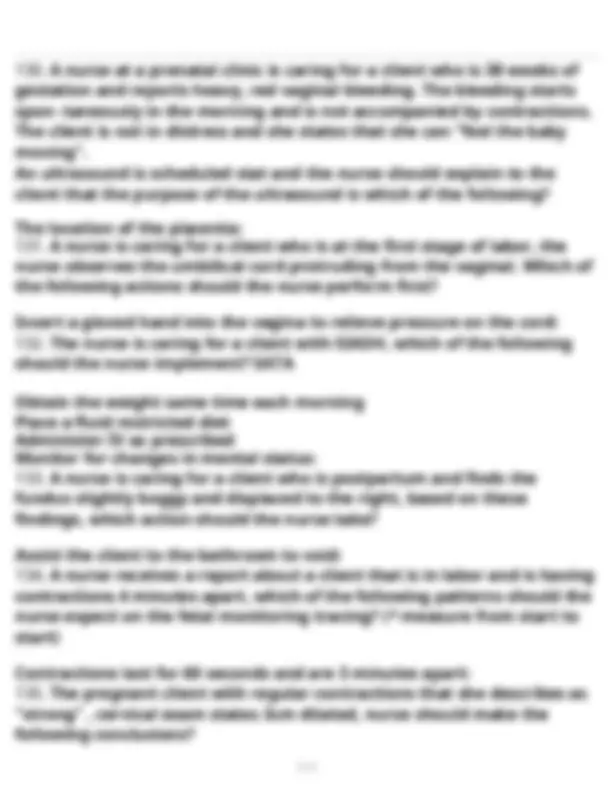
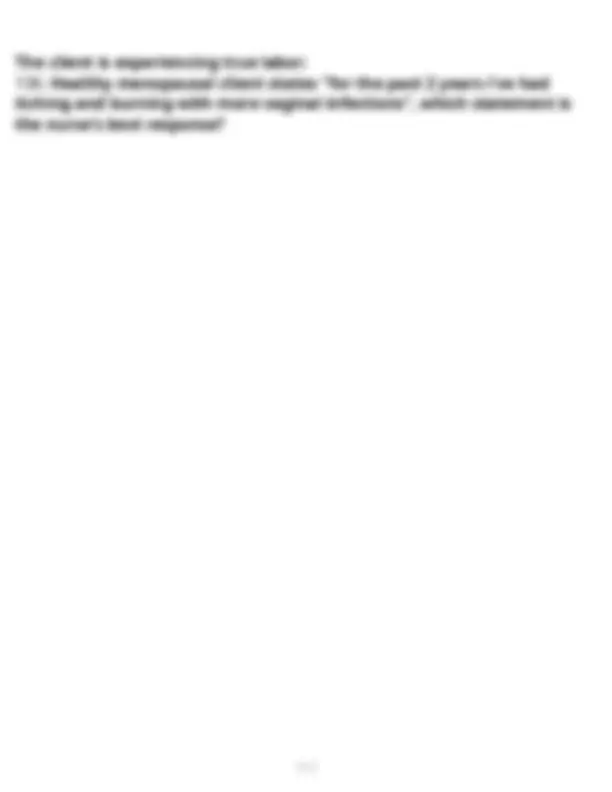
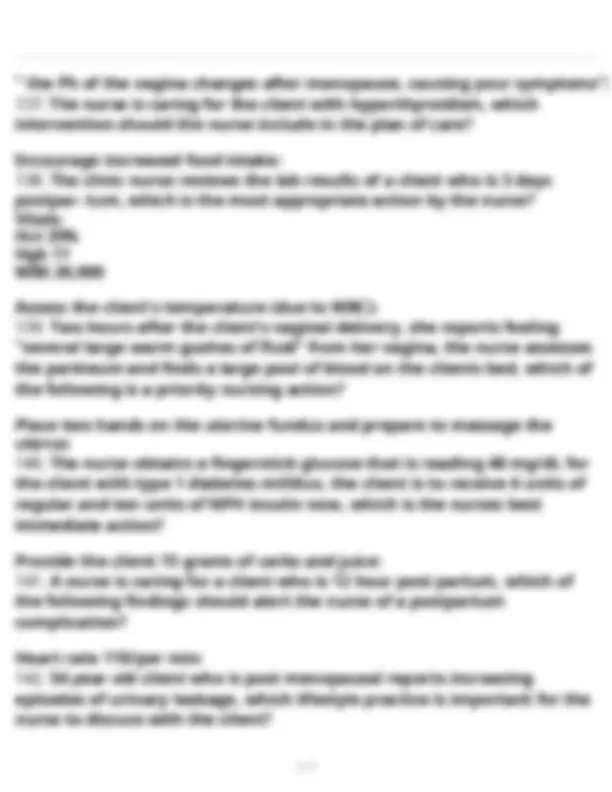
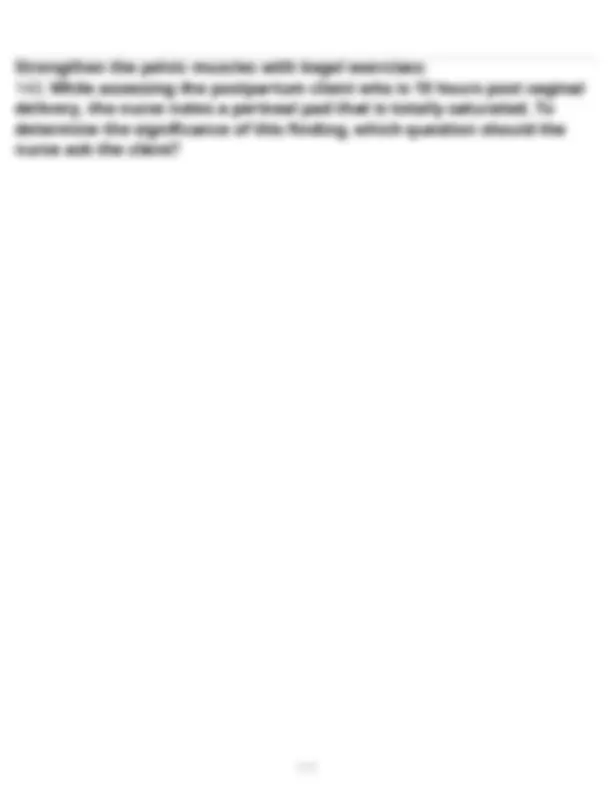
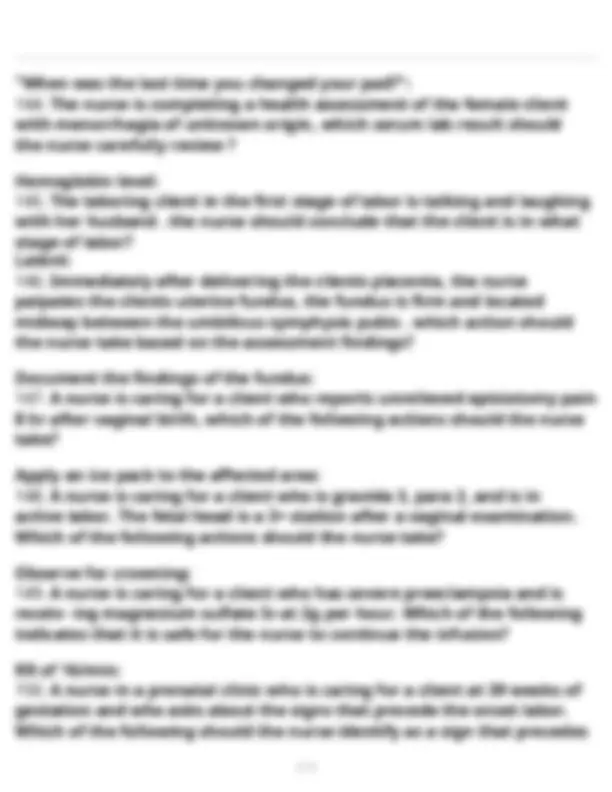
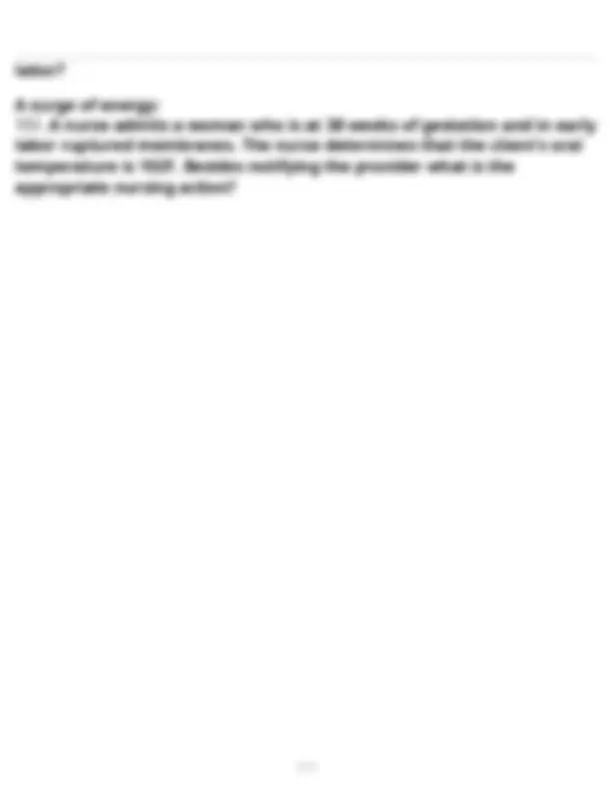
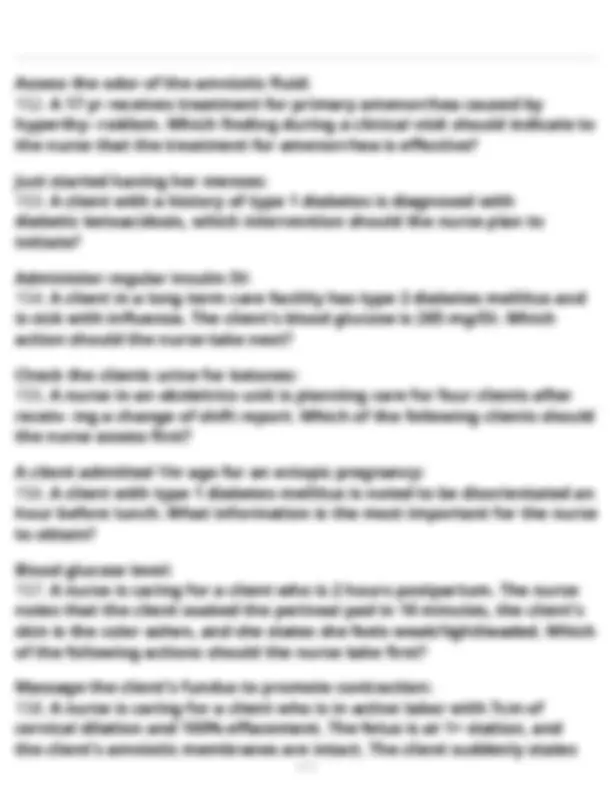
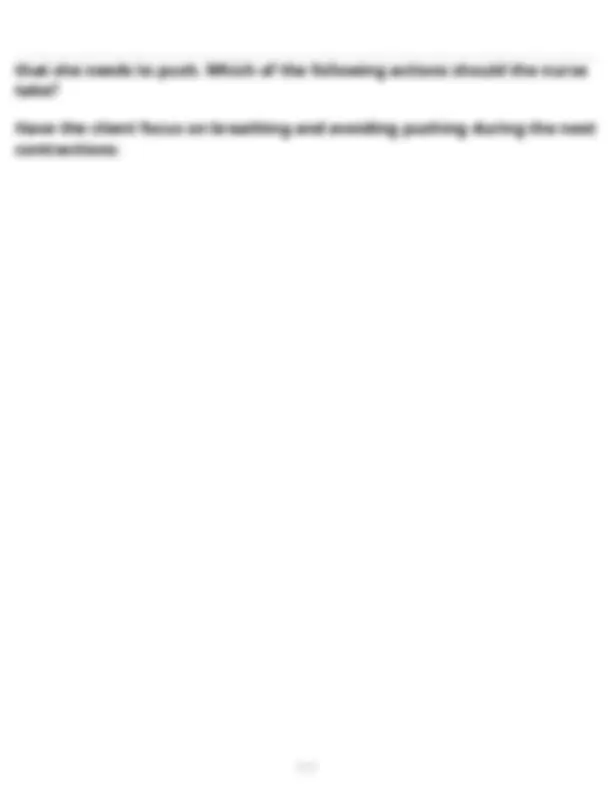
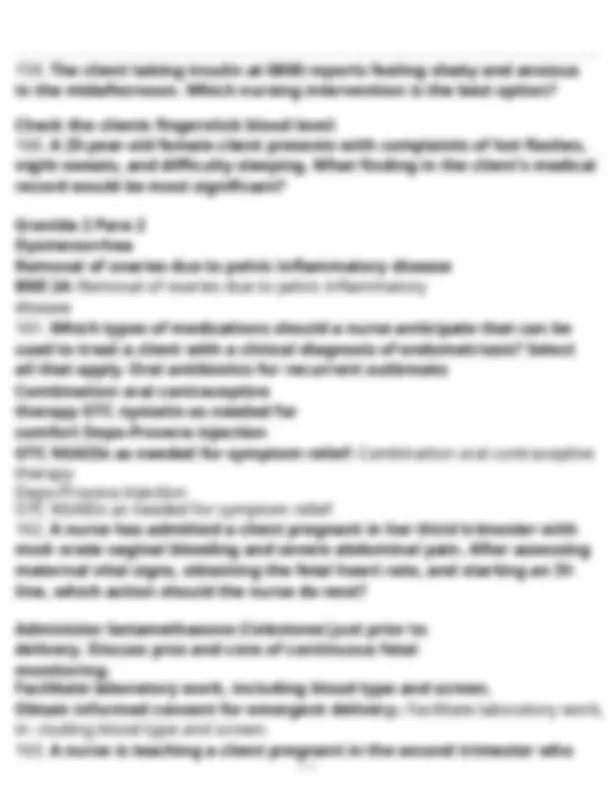
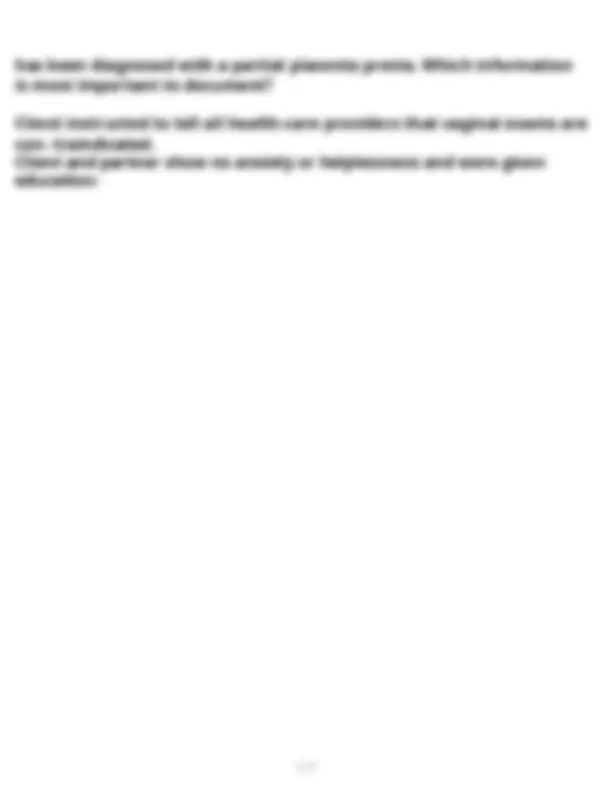
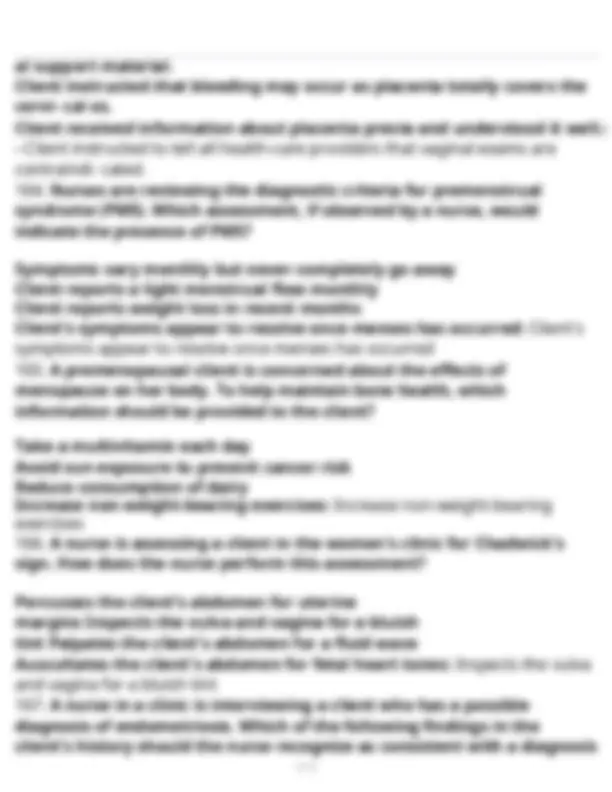
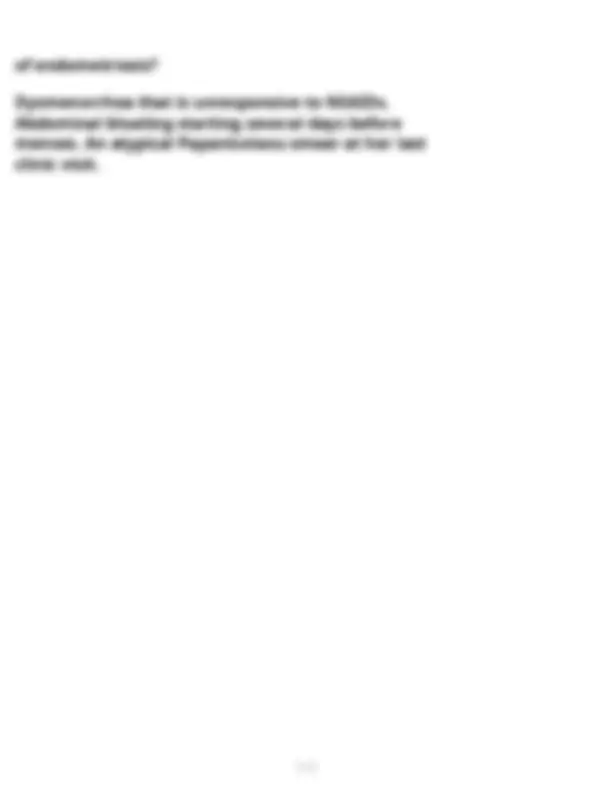
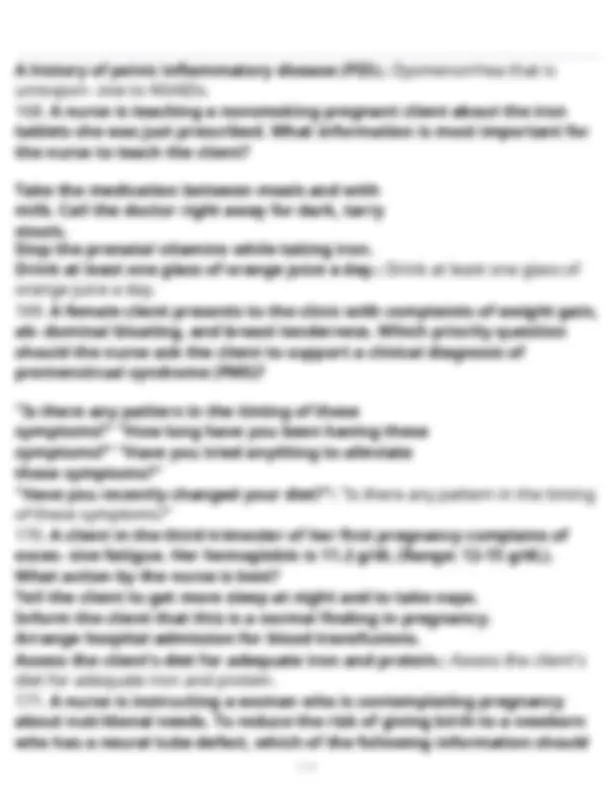
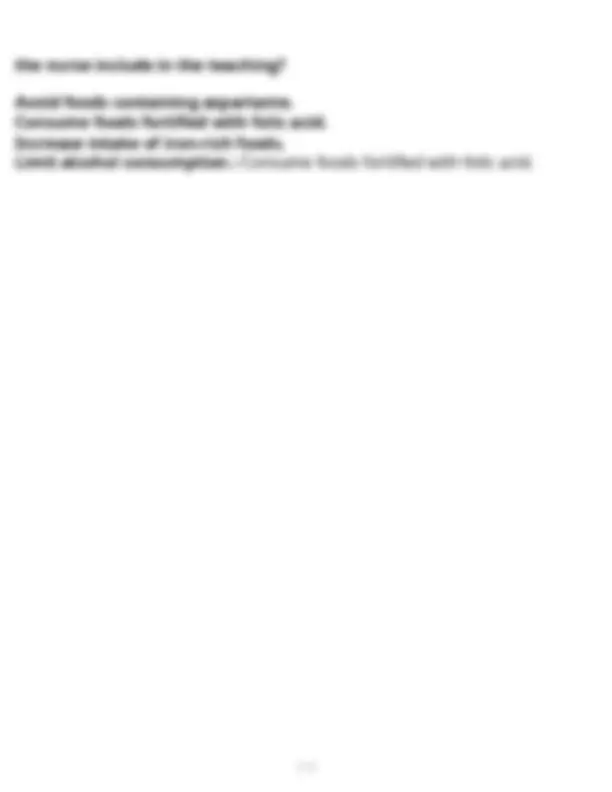
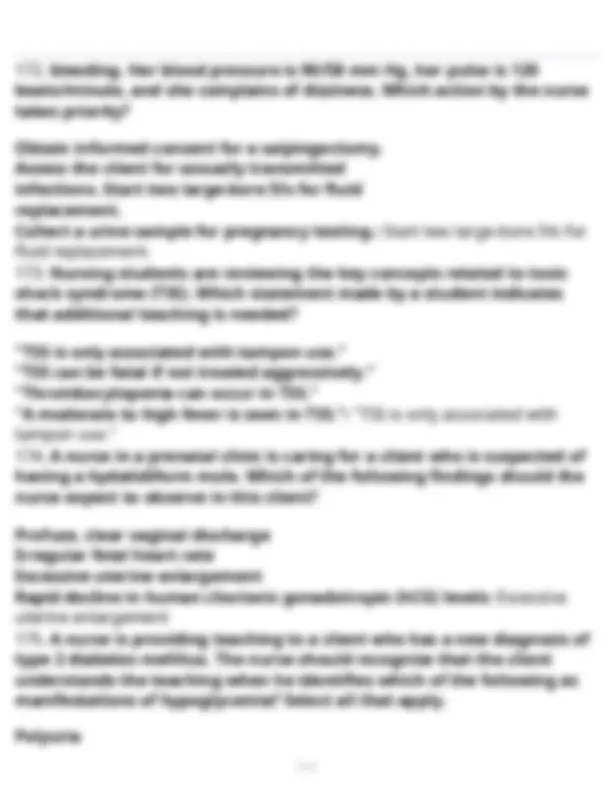
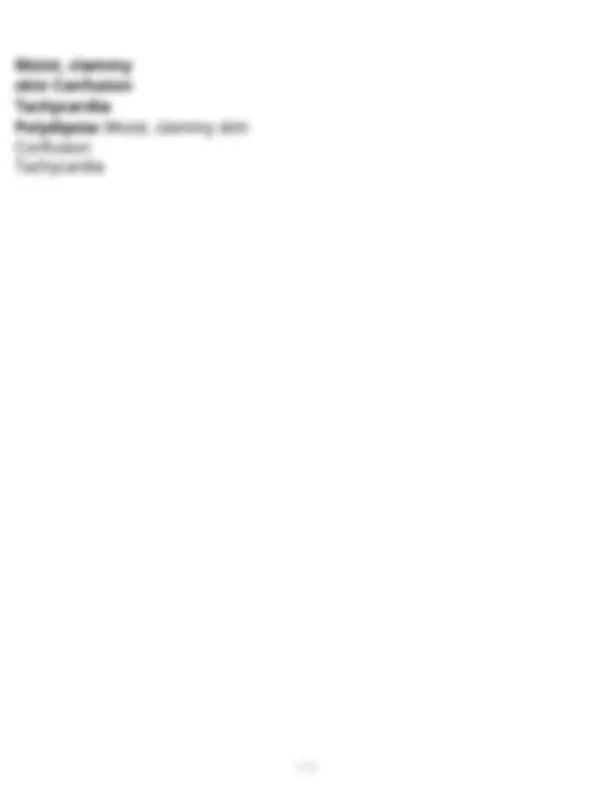

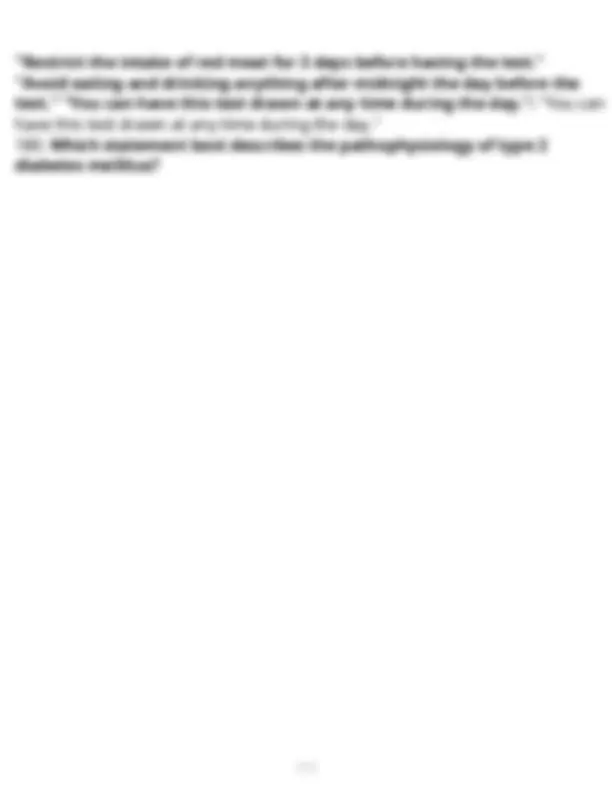
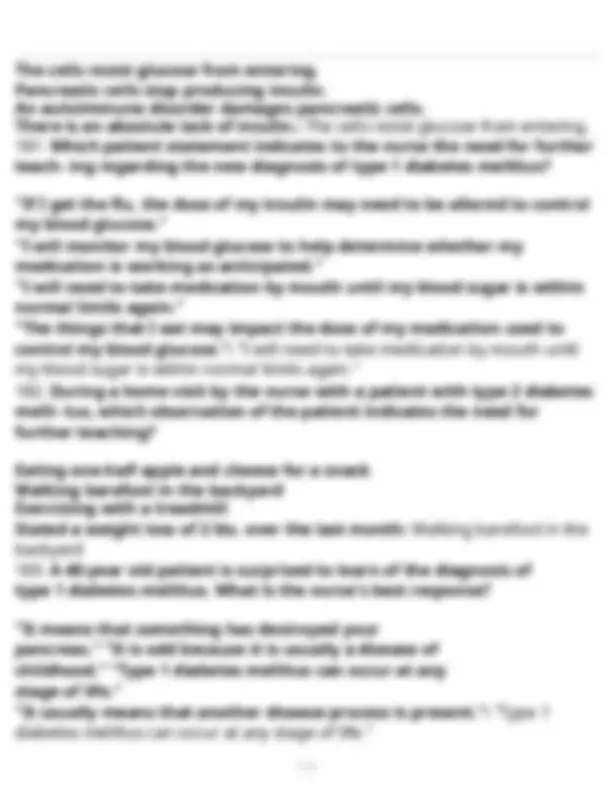
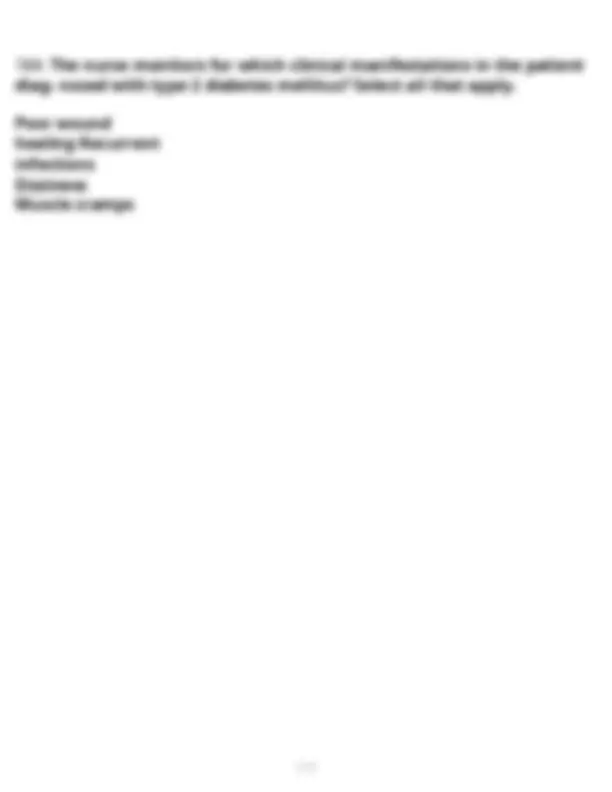
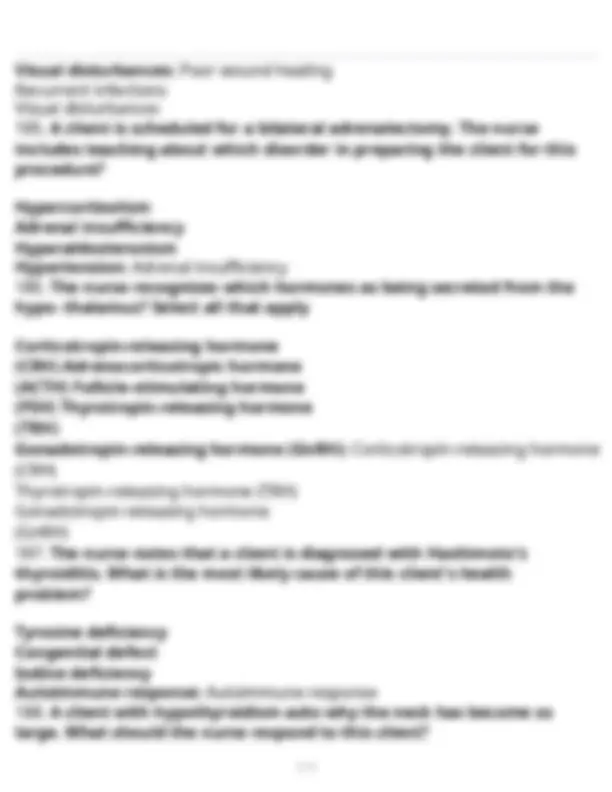
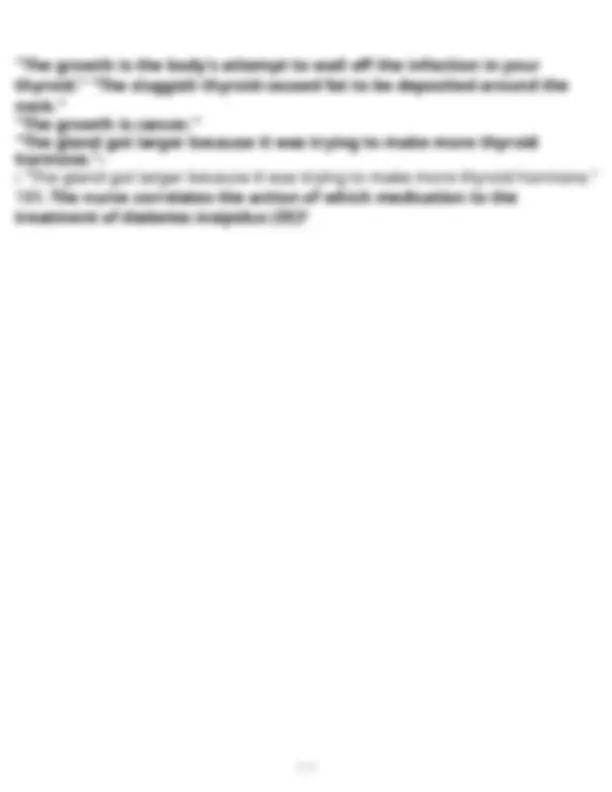
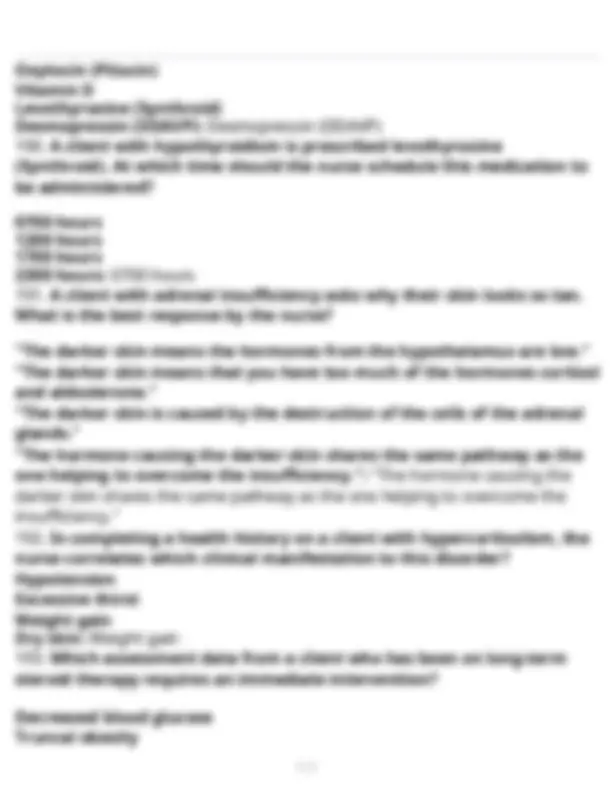
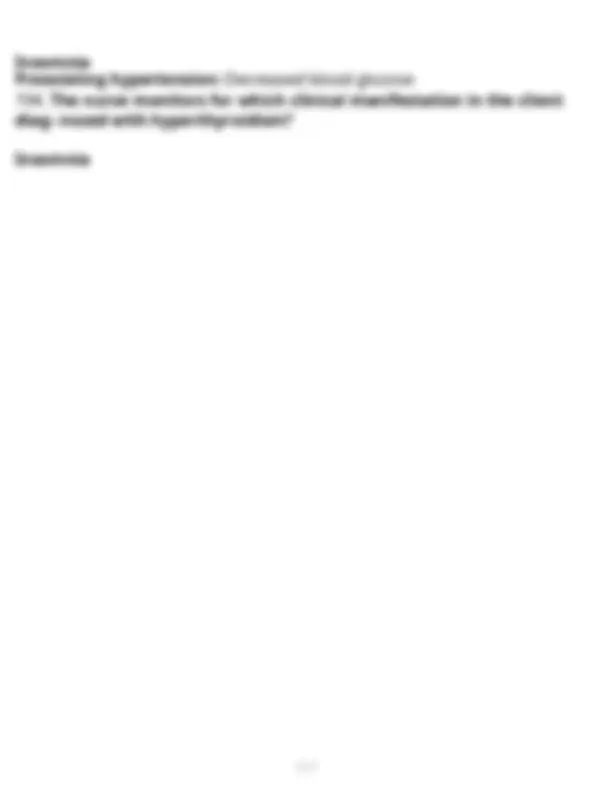
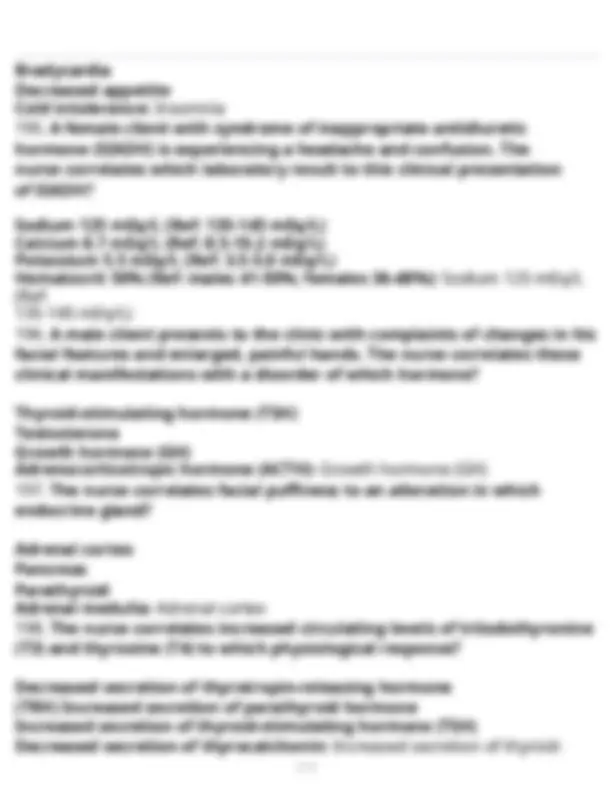
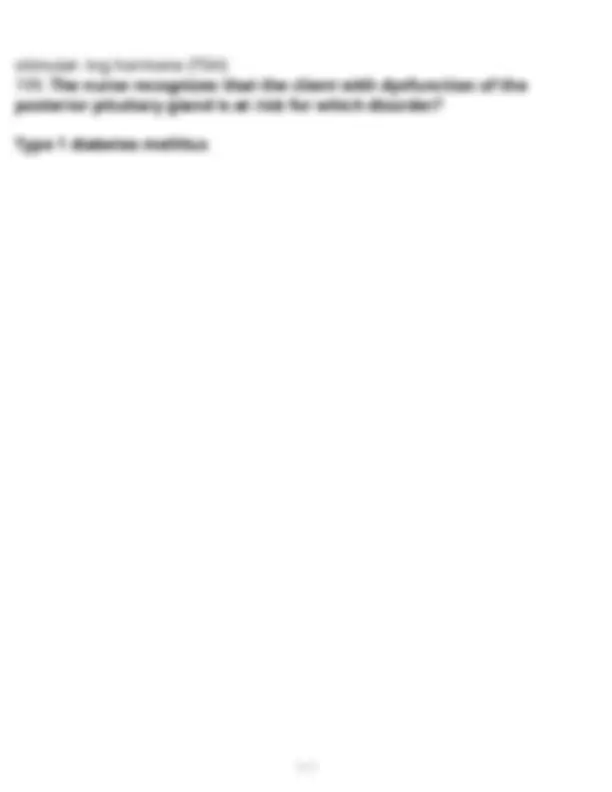
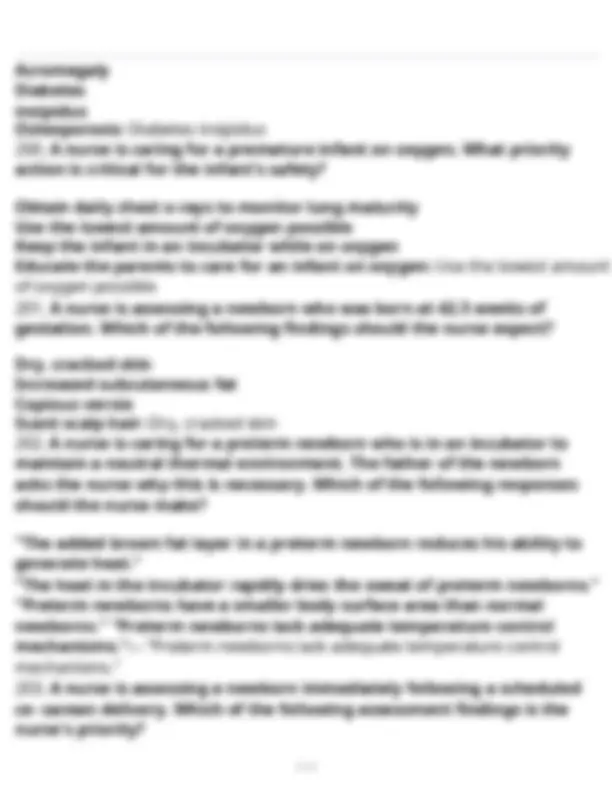
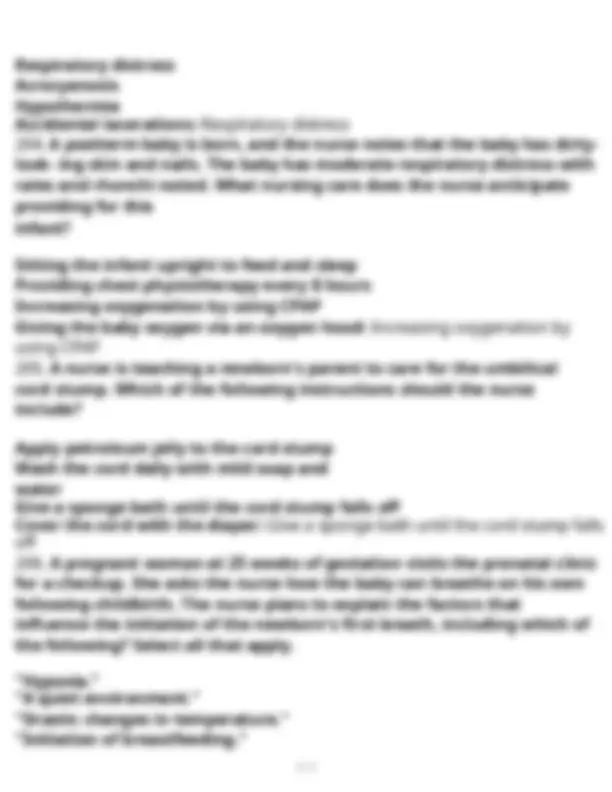
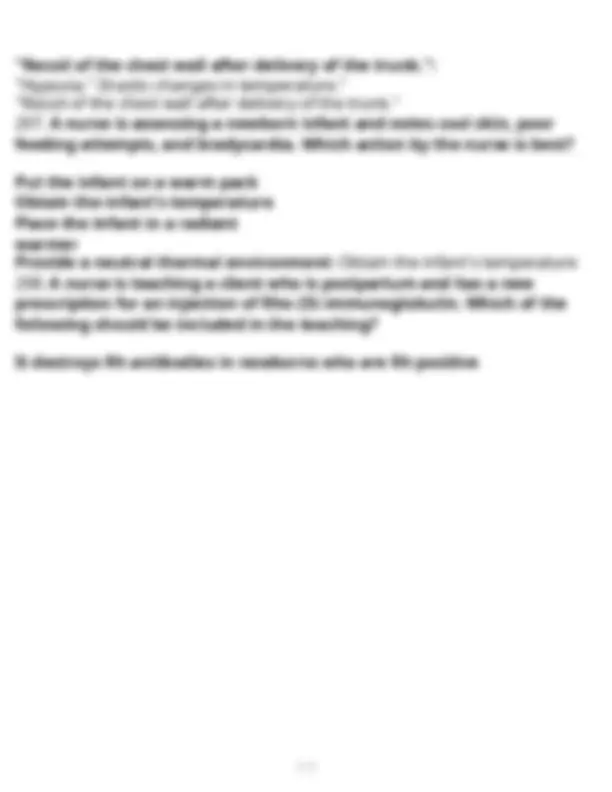
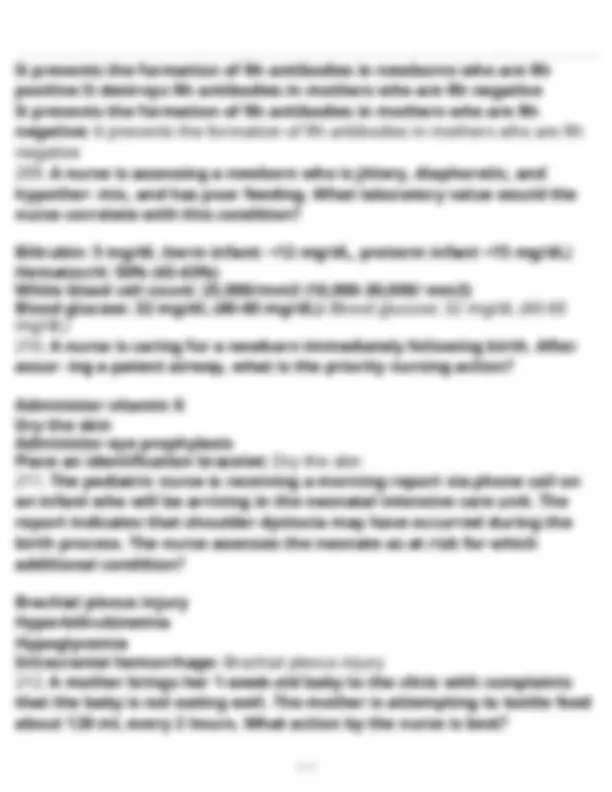
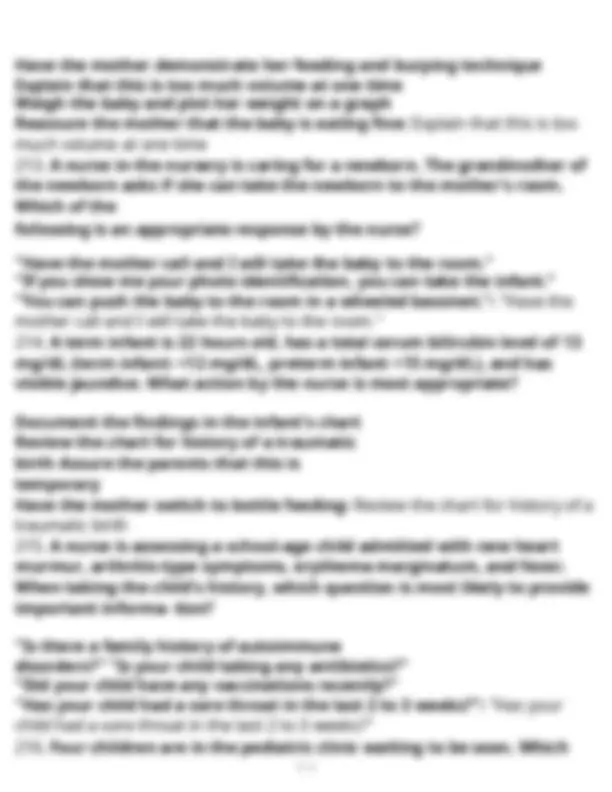
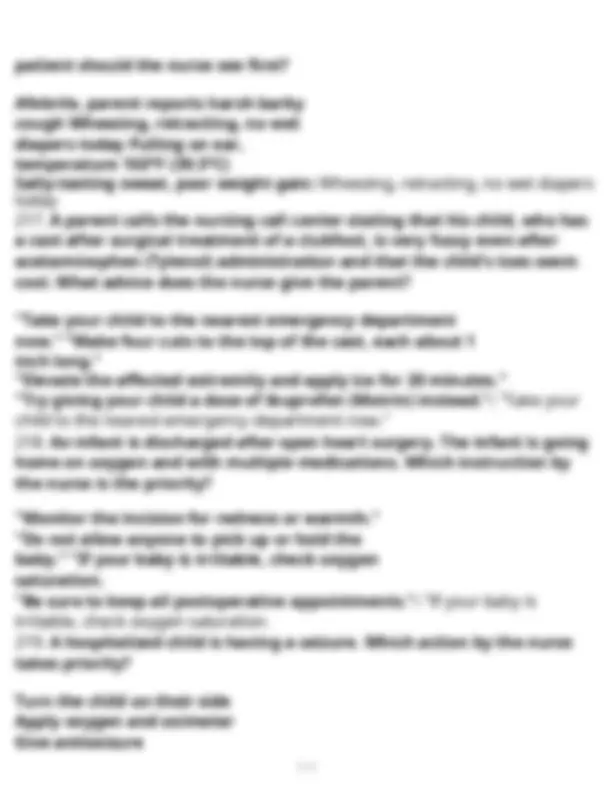
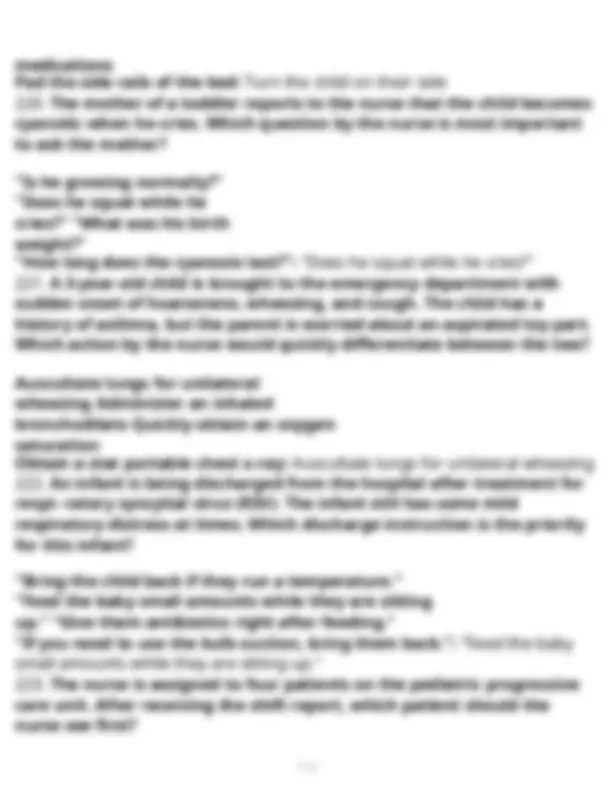
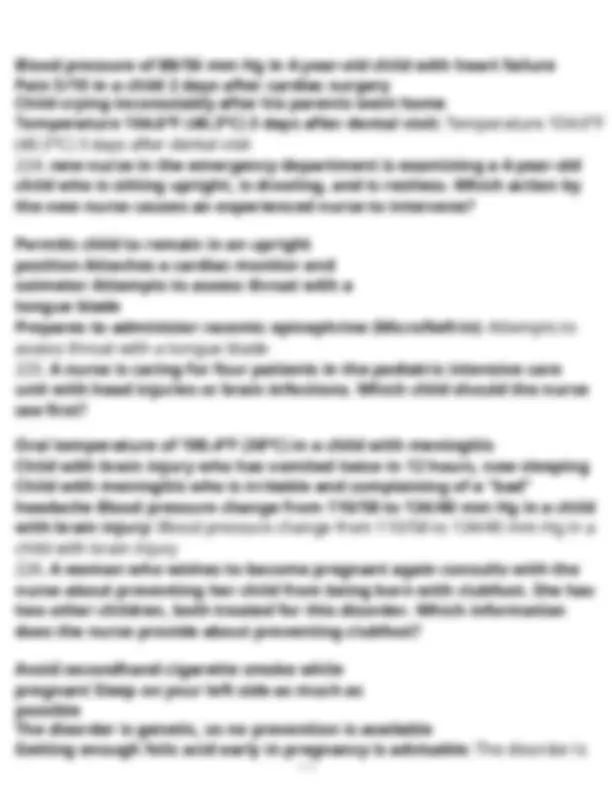
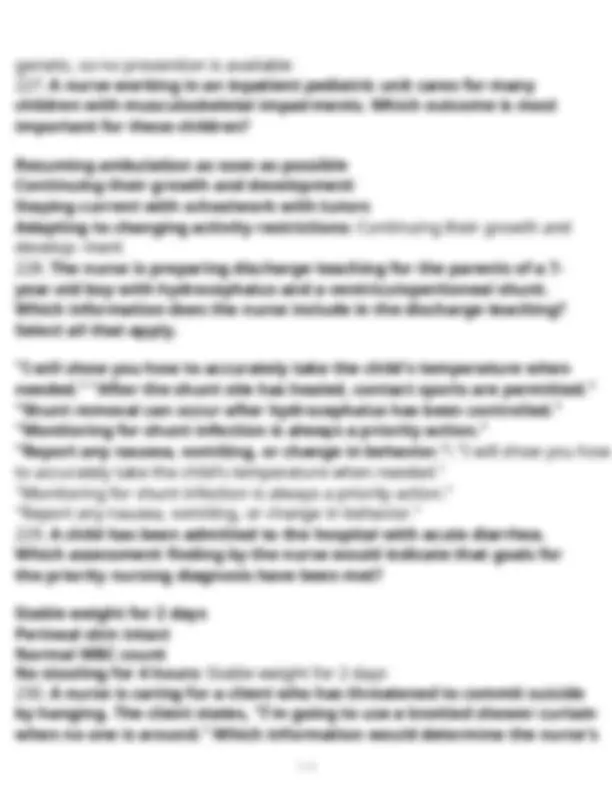
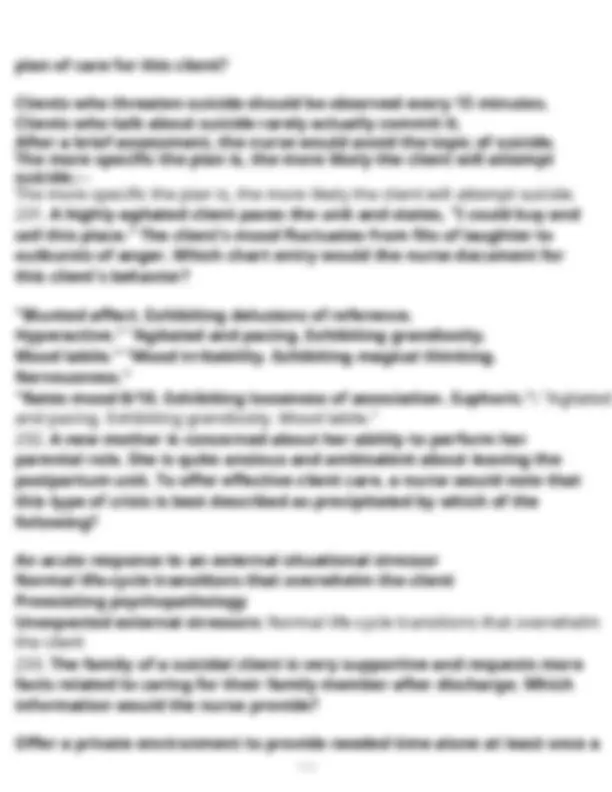
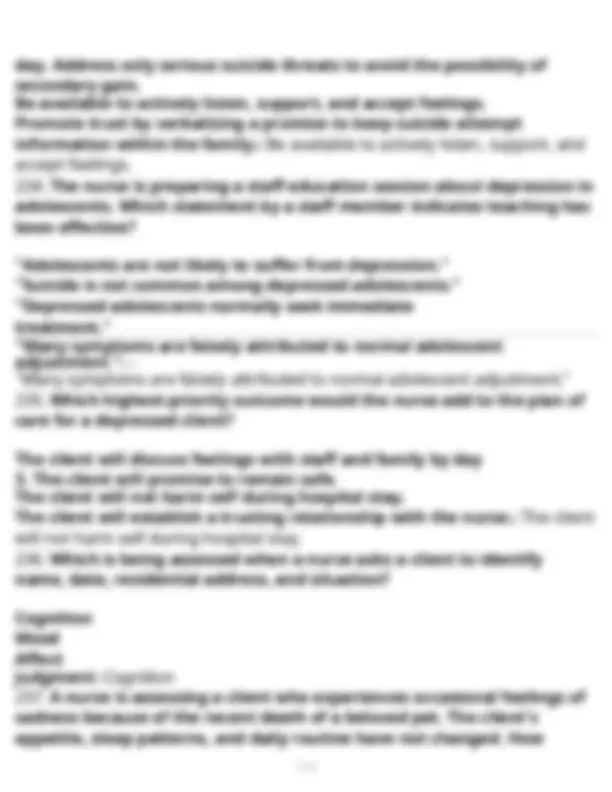
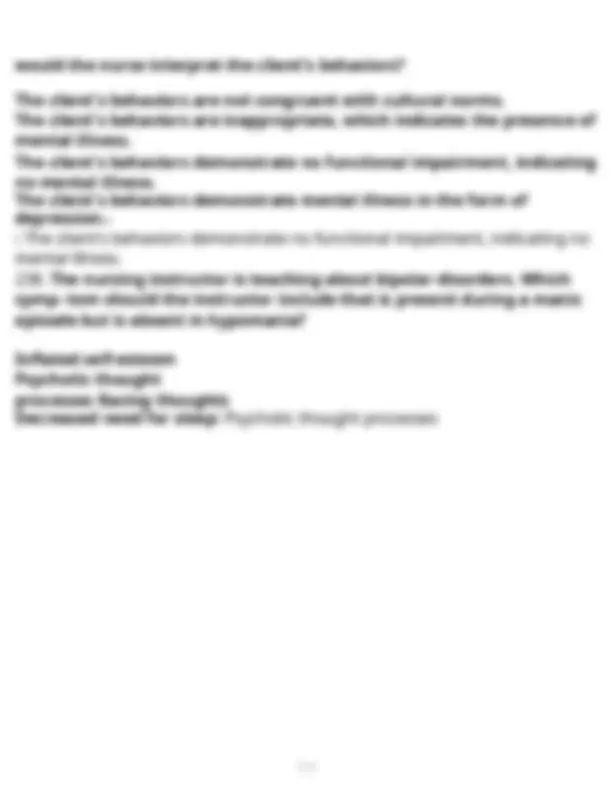
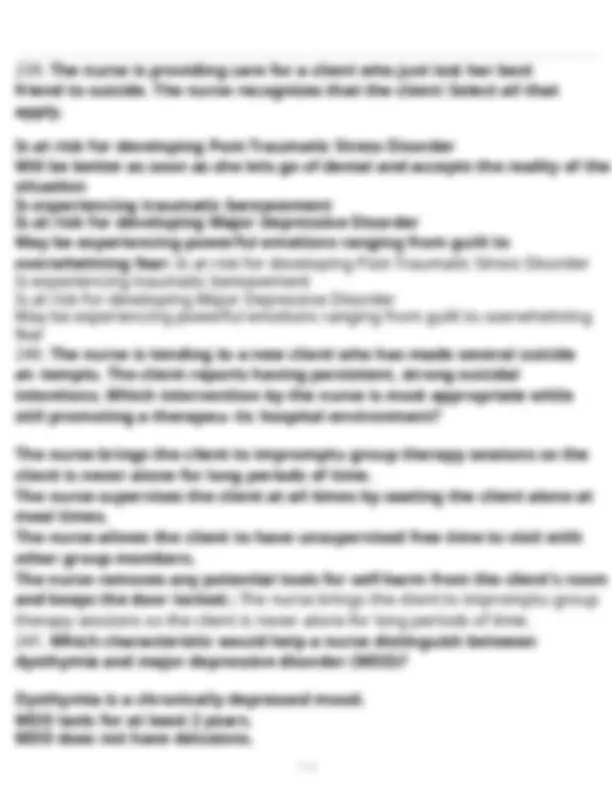
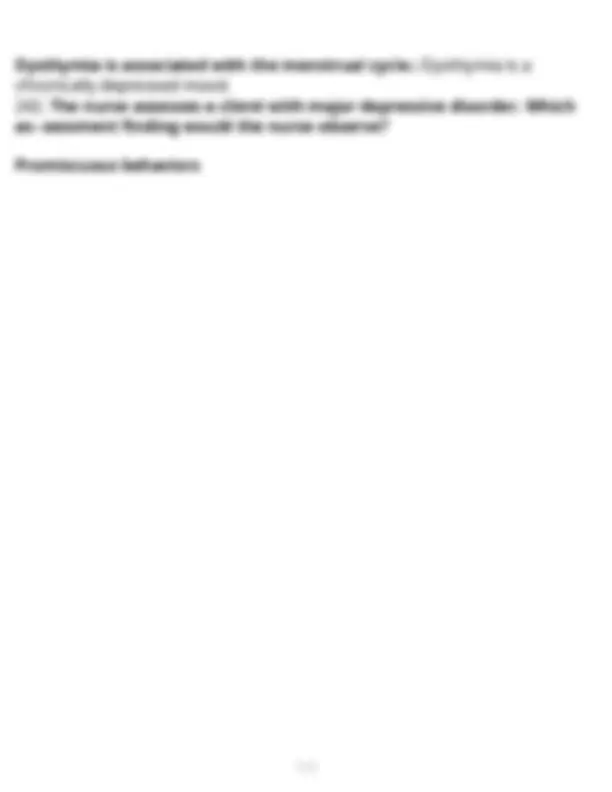
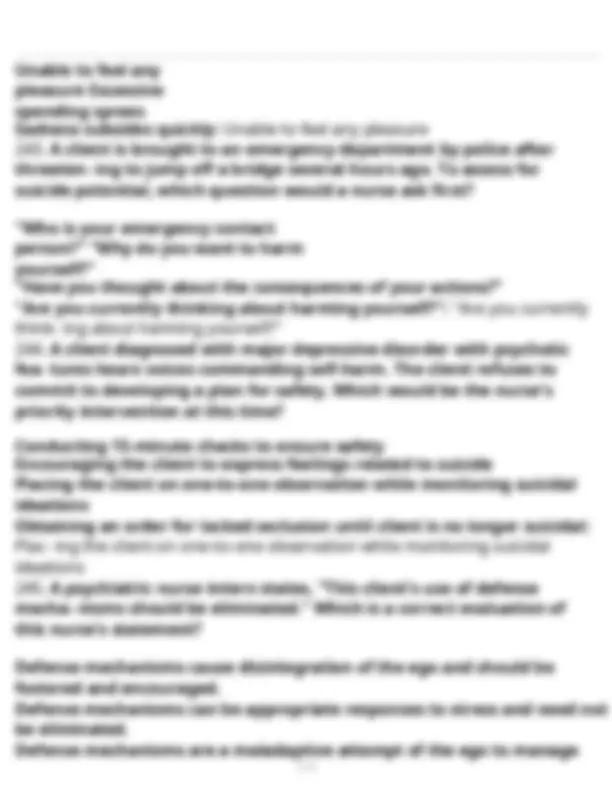
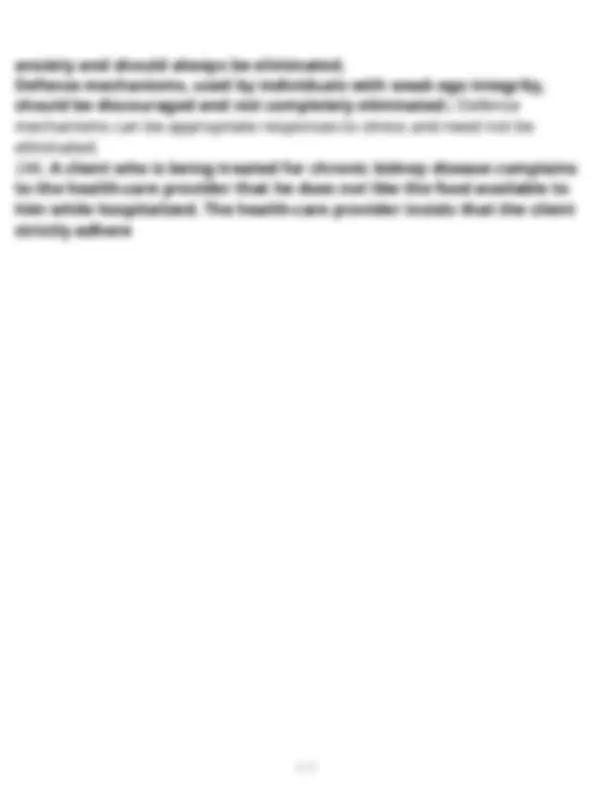
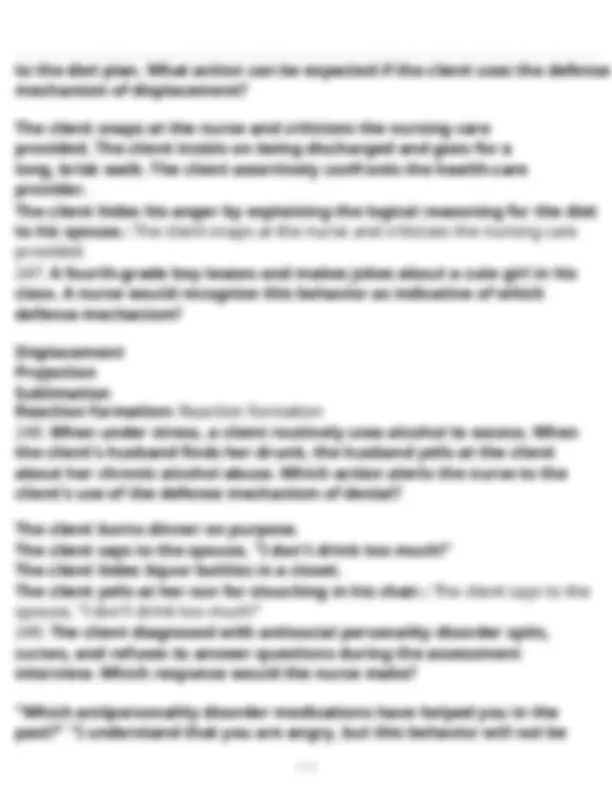
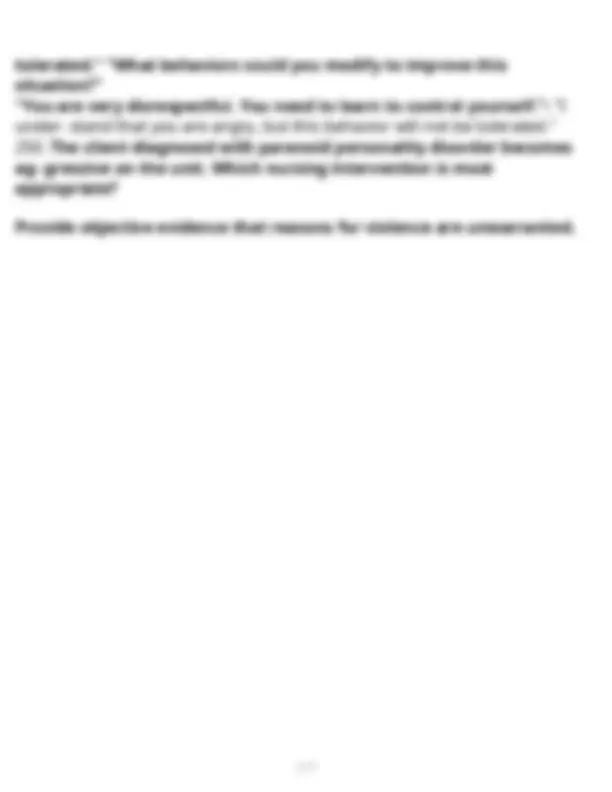
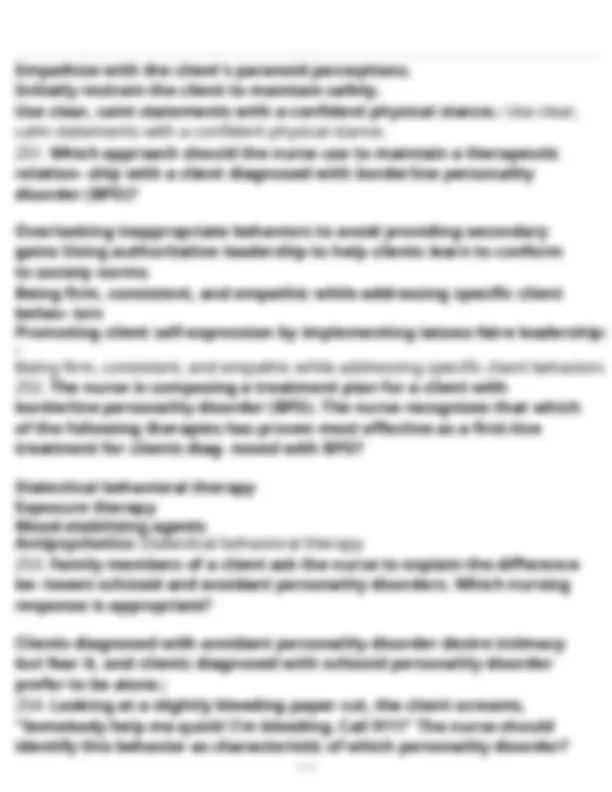
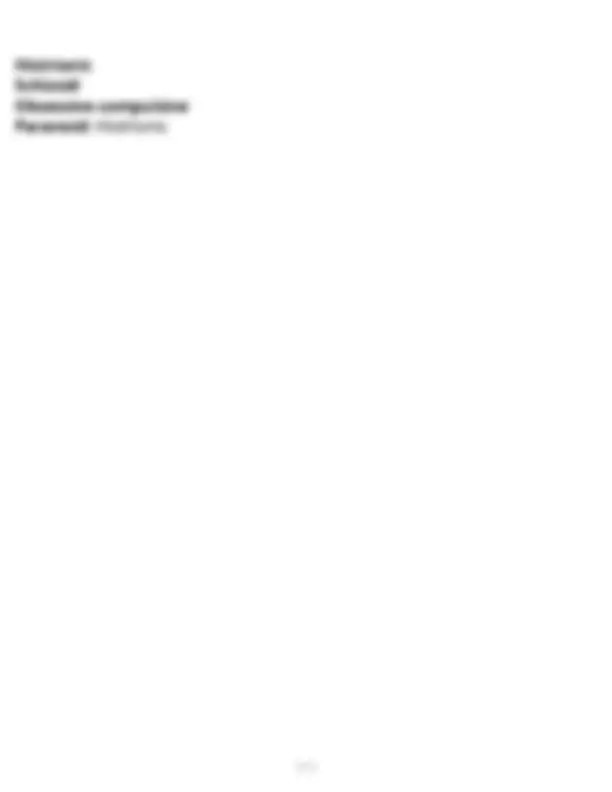
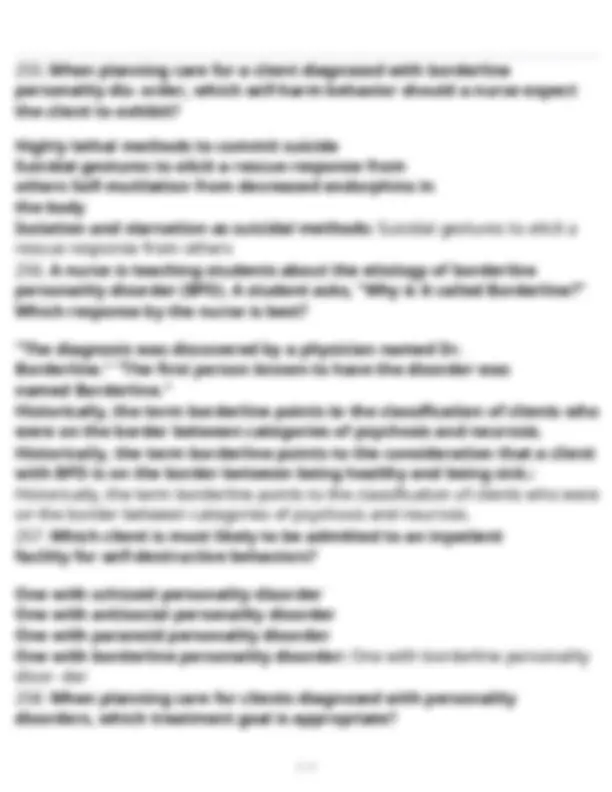
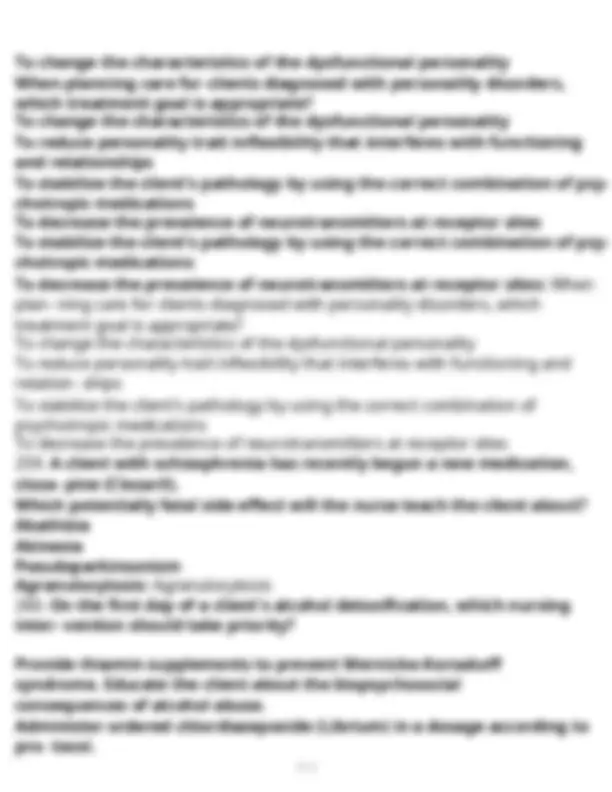
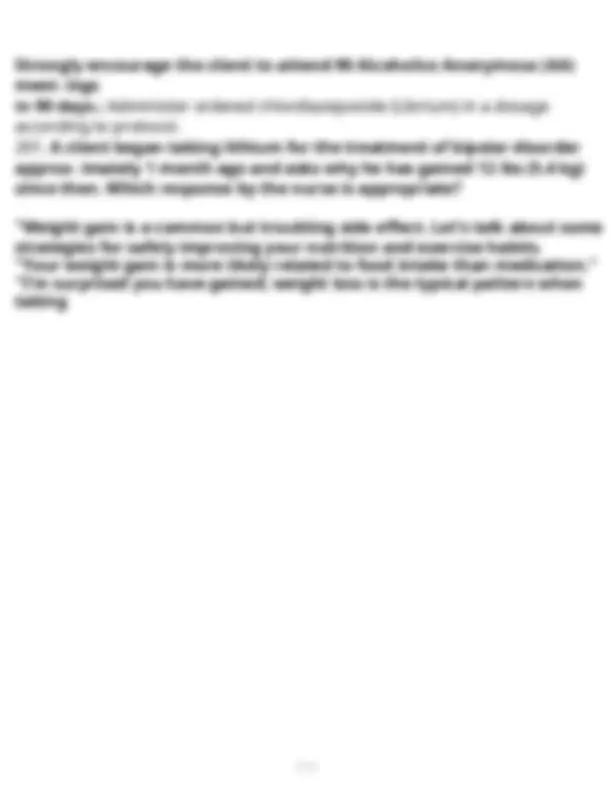
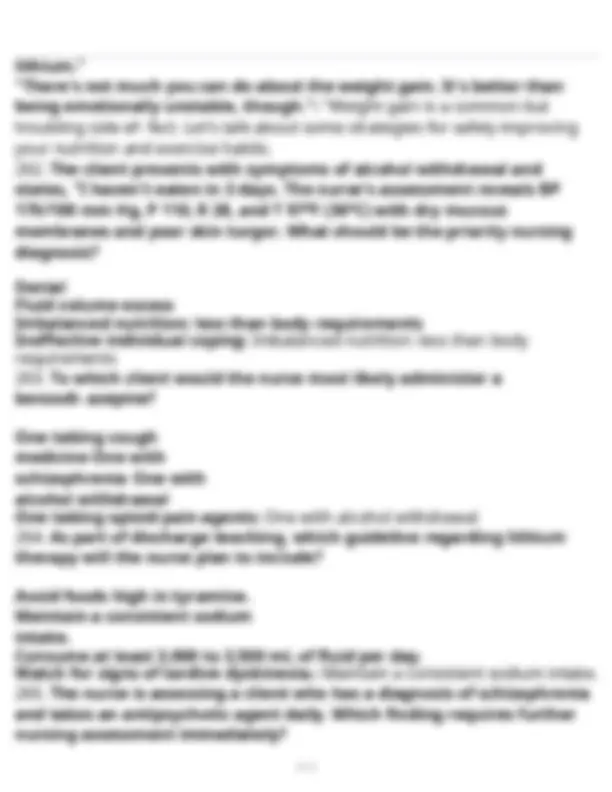
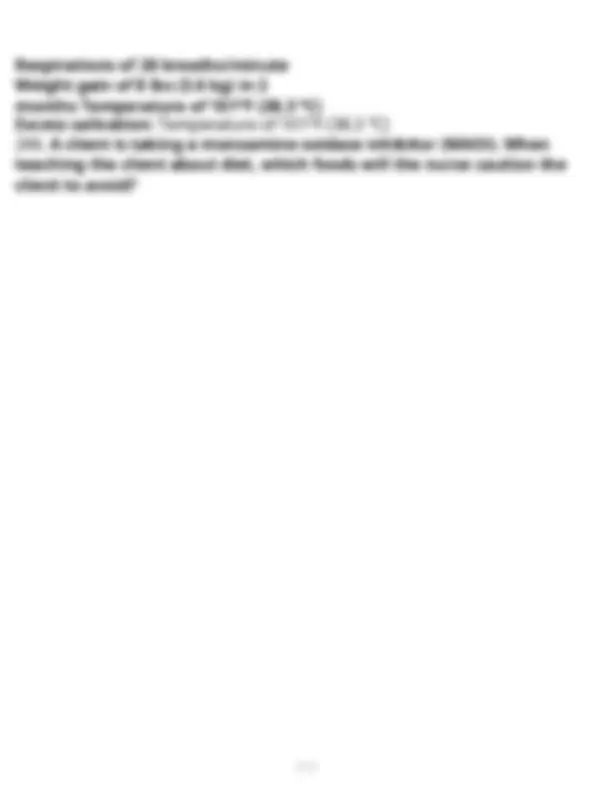
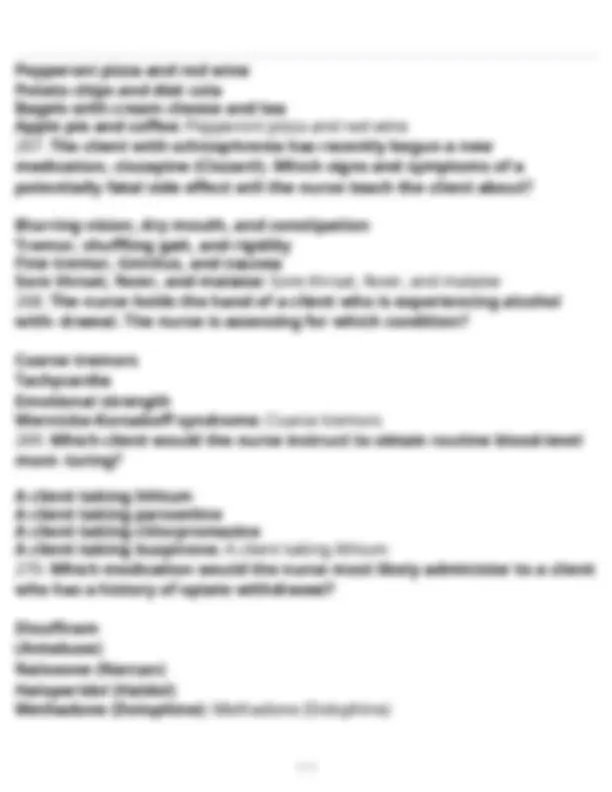


Study with the several resources on Docsity

Earn points by helping other students or get them with a premium plan


Prepare for your exams
Study with the several resources on Docsity

Earn points to download
Earn points by helping other students or get them with a premium plan
Community
Ask the community for help and clear up your study doubts
Discover the best universities in your country according to Docsity users
Free resources
Download our free guides on studying techniques, anxiety management strategies, and thesis advice from Docsity tutors
Final exam NUR2030 – questions latest download already graded /[2024-2025]
Typology: Exams
1 / 90

This page cannot be seen from the preview
Don't miss anything!



















































































B. Your body has insulin resistance and decreased insulin secretion C. Your kidneys are not able to reabsorb water which leads to Type 2 diabetes mellitus. D. An infection in your pancreas destroyed the cells that make insulin: B. Your body has insulin resistance and decreased insulin secretion
A. Serum sodium 146 mEq/L (Range 135-145 mEq/L) B. Urine specific gravity 1.014 (Range: 1.005-1.030) C. Blood glucose 80 mg/dL (Range: 70-110 mg/dL) D. Blood urea nitrogen (BUN) 15 mg/dL )Range: 6 - 24 mg/dL): B. Urine specific gravity 1.015 (Range: 1.005 - 1.030)
C. Withhold your usual daily dose of insulin D. Drink 240 to 360 milliliters of calorie-free liquids every 8 hours: B. Check your urine for ketones
treated in the emergency department. Which findings would the nurse expect to note as confirming this diagnosis? Select all that apply. A. Elevated blood glucose level B. Low plasma bicarbonate level C. Decreased urine output D. Comatose state E. Increase in pH F. Deep, rapid breathing: A. Elevated blood glucose level B. Low plasma bicarbonate level F. Deep, rapid breathing
D. I will adjust my insulin dose according to the level of glucose in my urine.: B. I will notify my healthcare provider if my blood glucose level is higher than 250 mg/dL
breakfast at which of the following times? A. 0815 B. 0720 C. 0730 D. 0745: D. 0745
C. NPH Insulin D. Regular insulin: D. Regular insulin
head and trunk to tip backward: D. Hold the newborn in a semi-sitting position, then allow the newborn's head and trunk to tip backward
C. Initiate phototherapy D. Place the newborn in a radiant warmer: B. Obtain blood glucose by heel stick
A. Blue coloring of the hands and feet B. Facial edema C. Soft, edematous area o the scalp D. Poor sucking: D. Poor sucking
of the following findings should the nurse expect? Select all that apply A. Positive Moro reflex B. Abundant lanugo
D. Your baby should sleep at least 6 hours between feedings: B. Your baby should wet 6 to 8 diapers per day
A. Excessive hunger B. Lethargy C. Constant high-pitched cry D. Sleepiness: C. Constant high-pitched cry